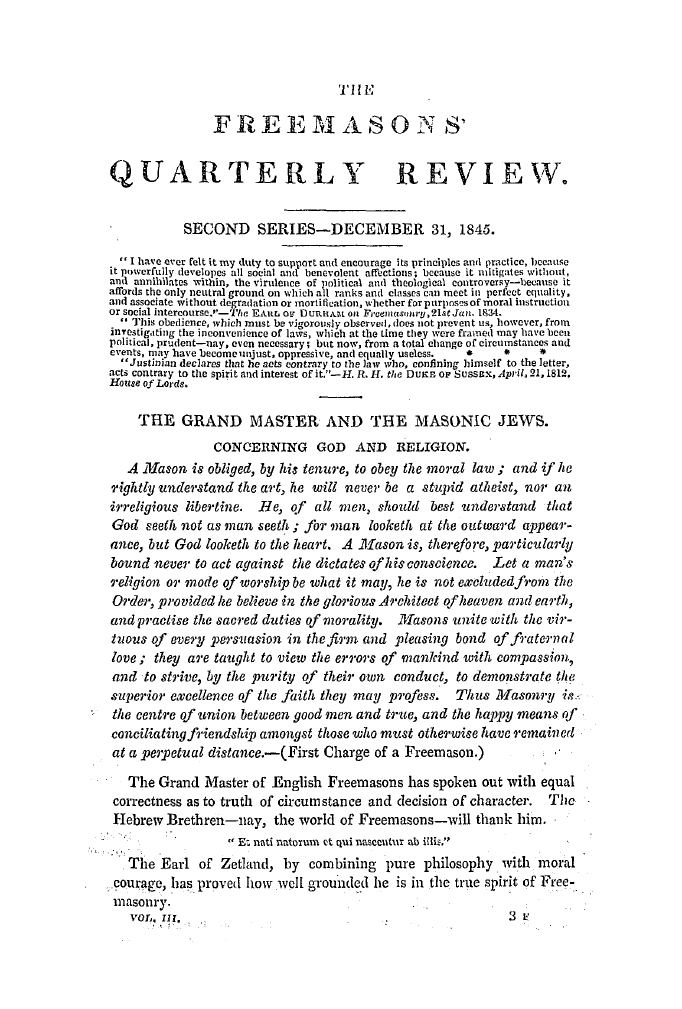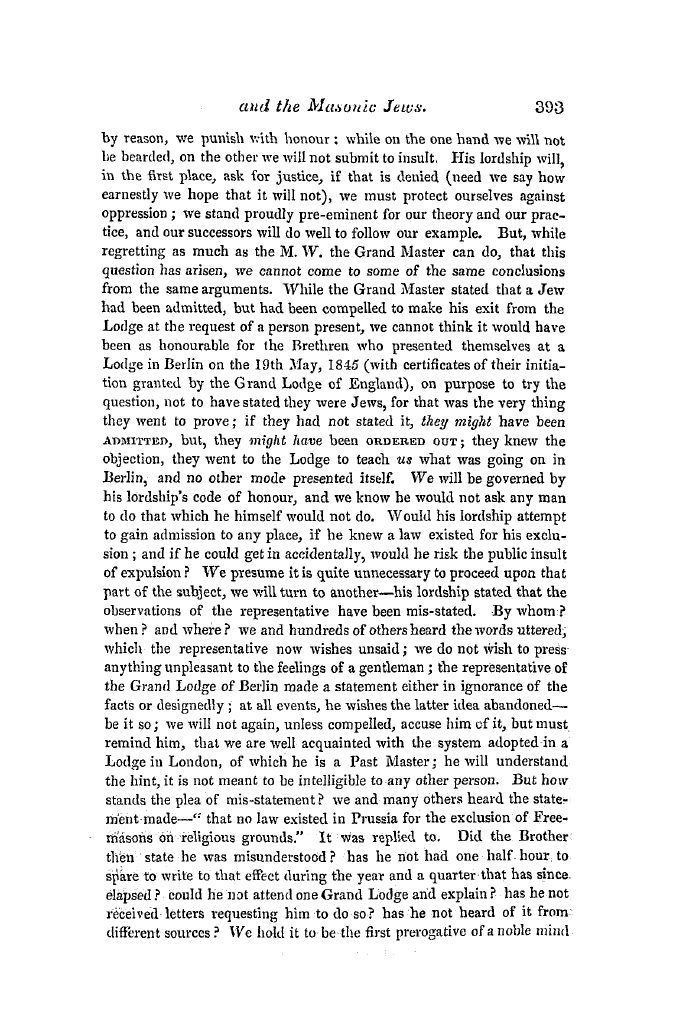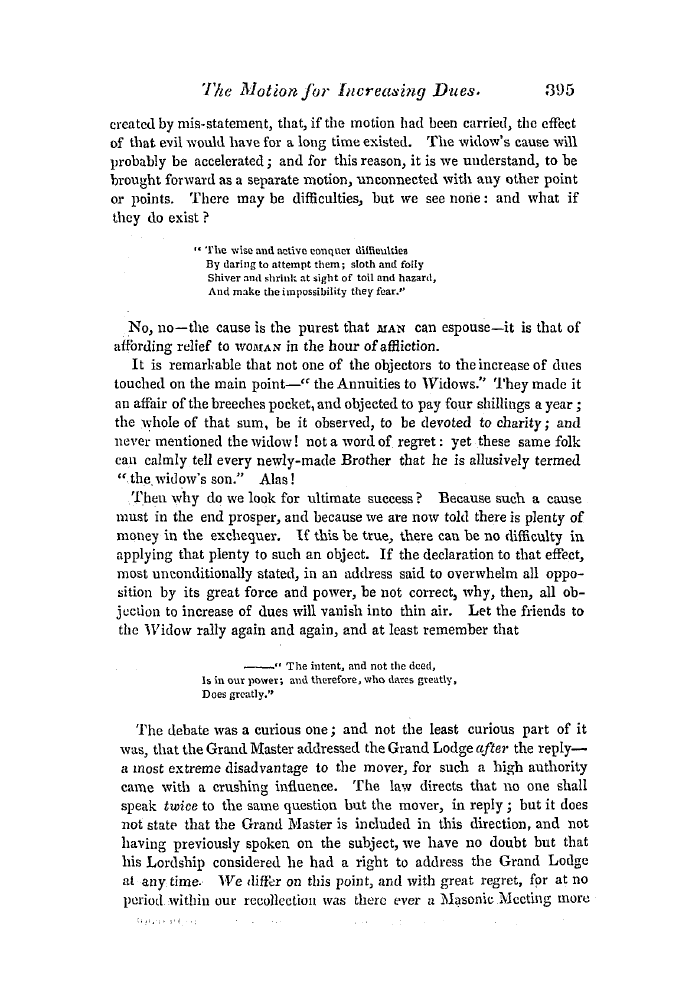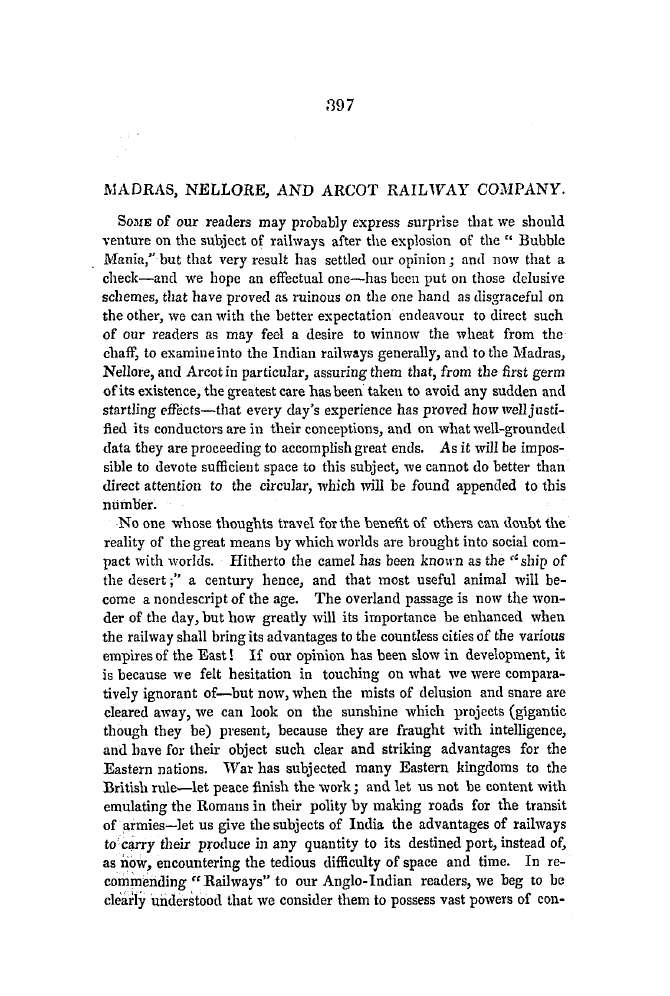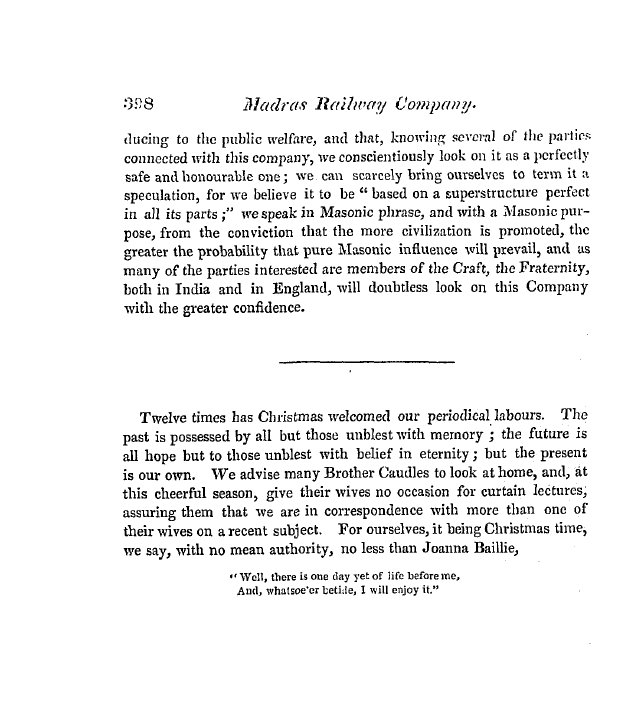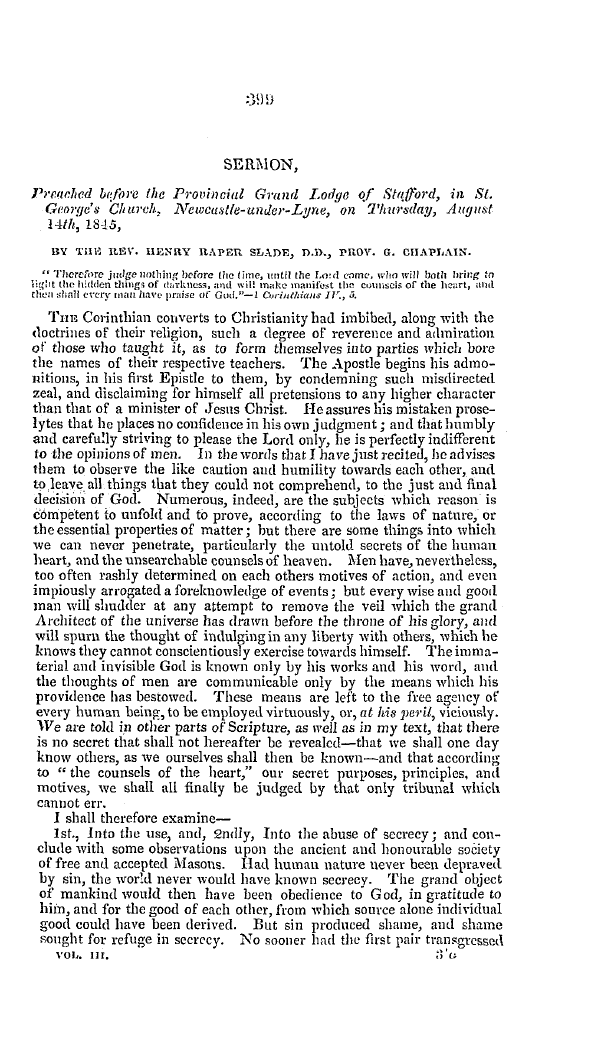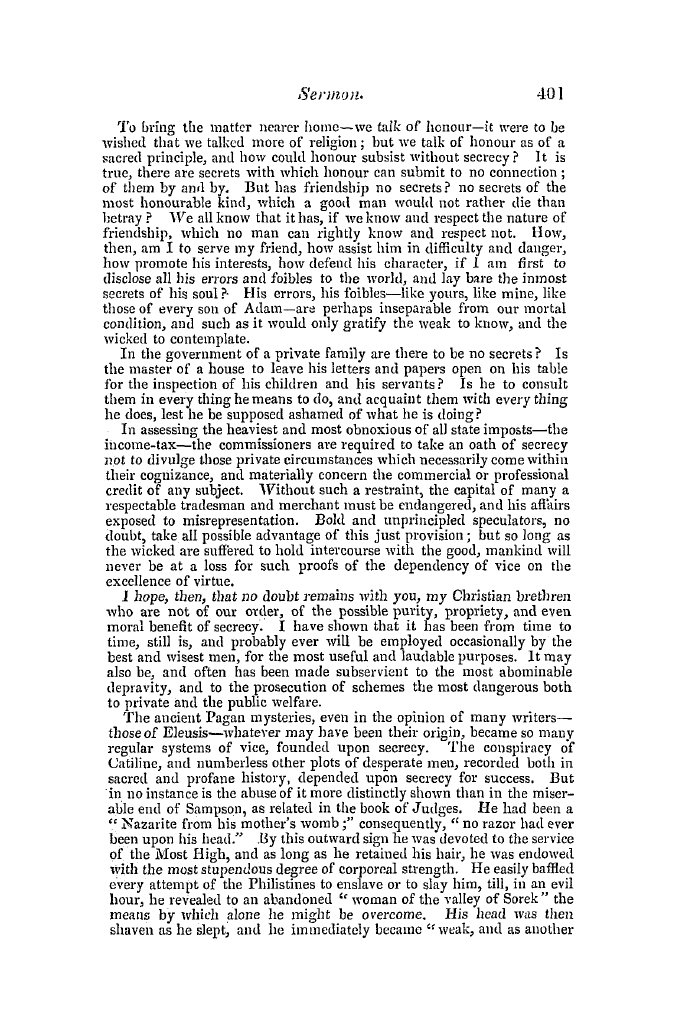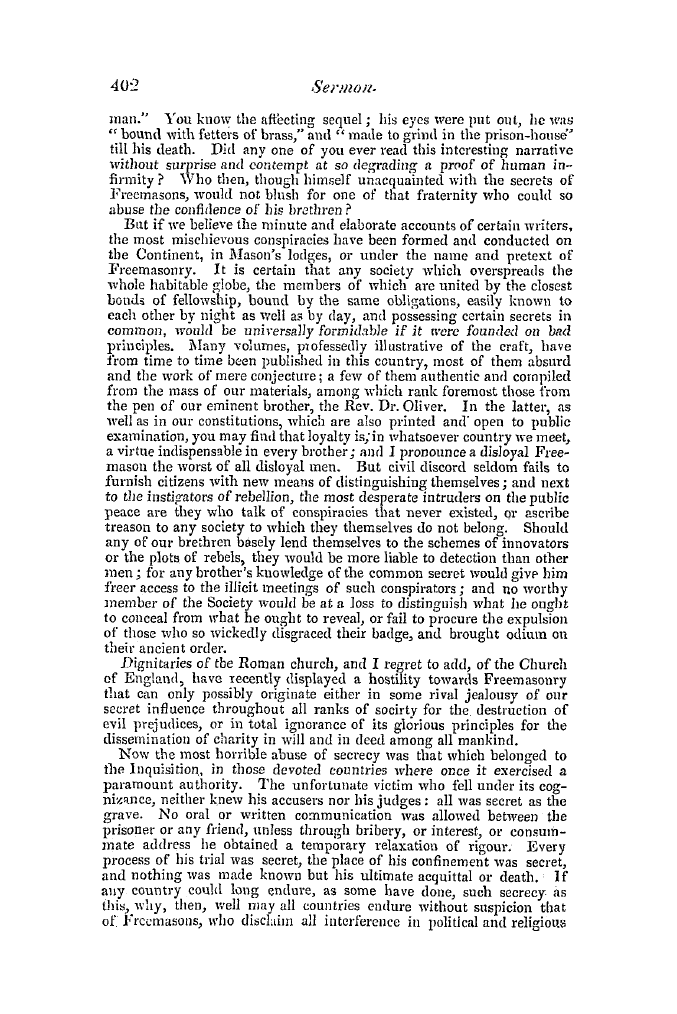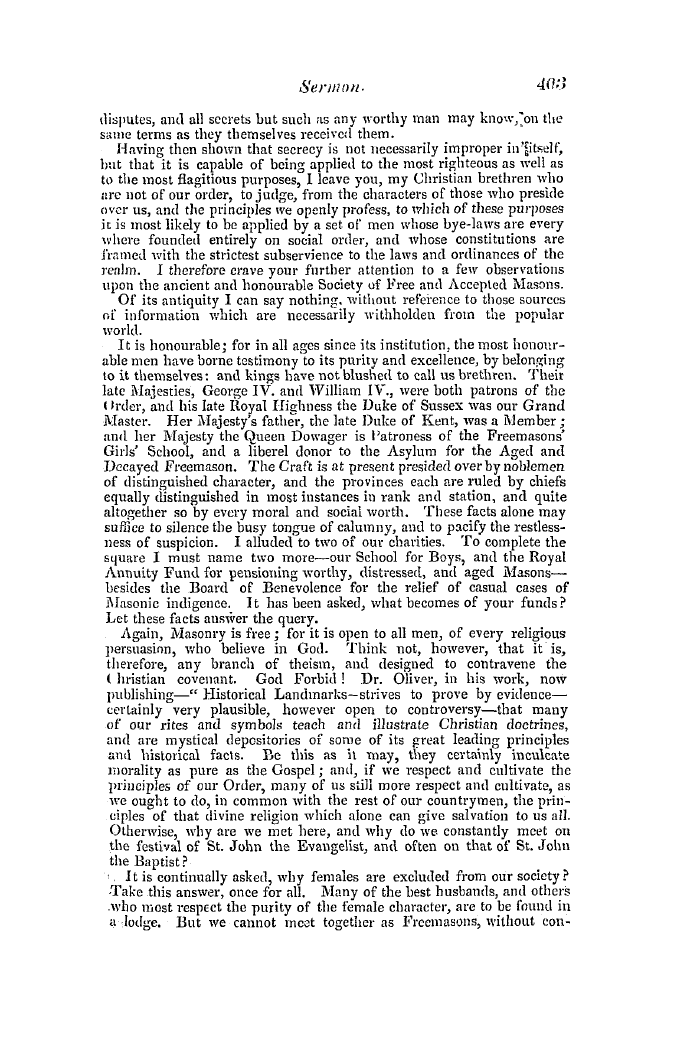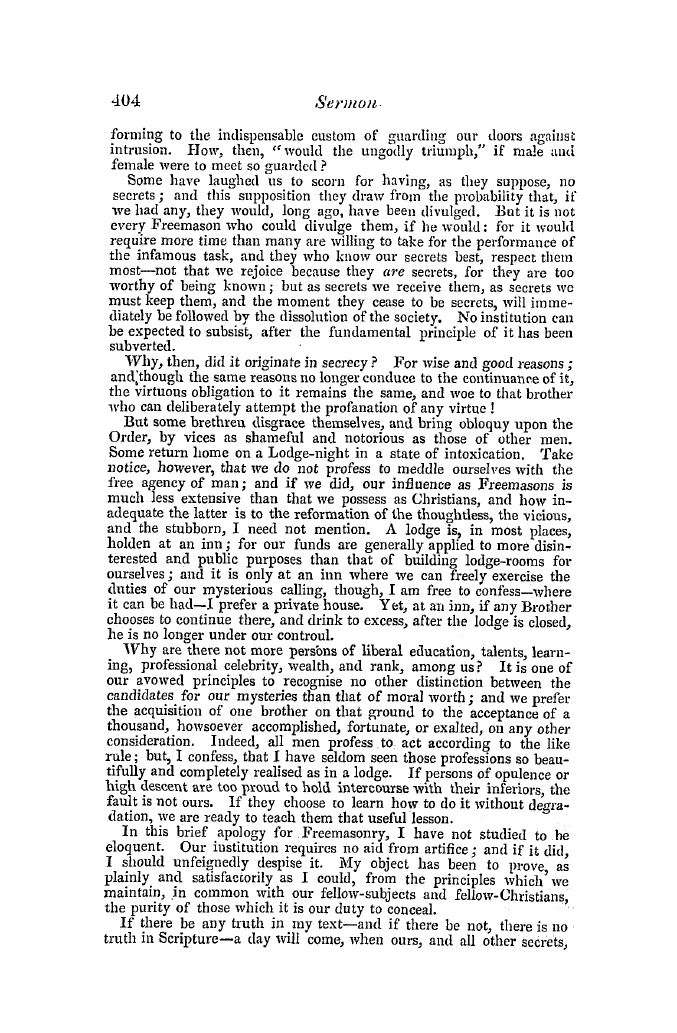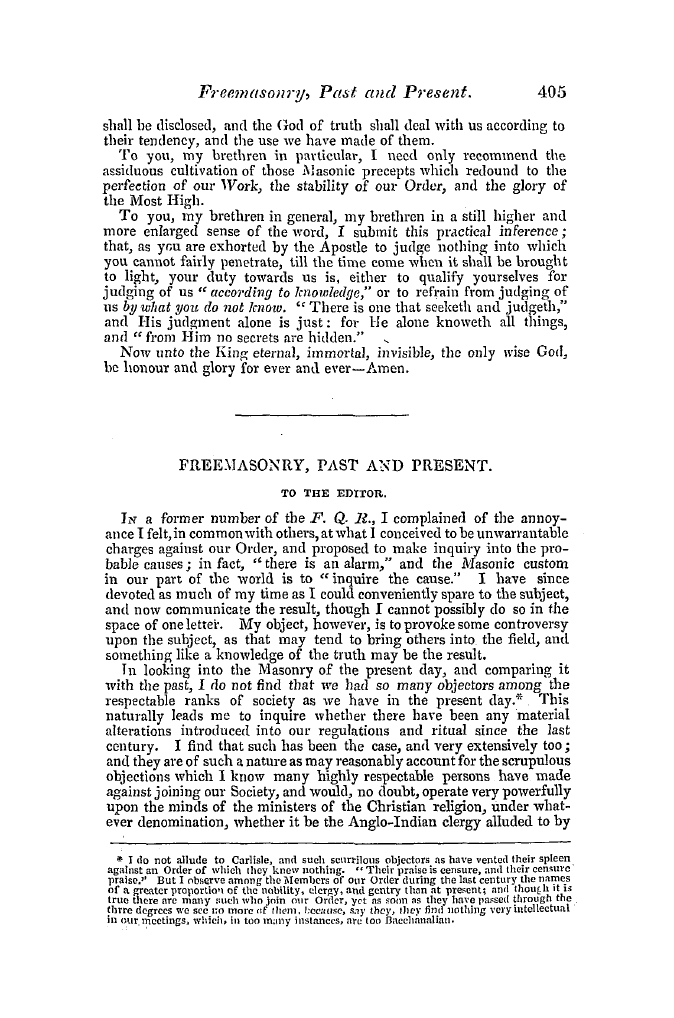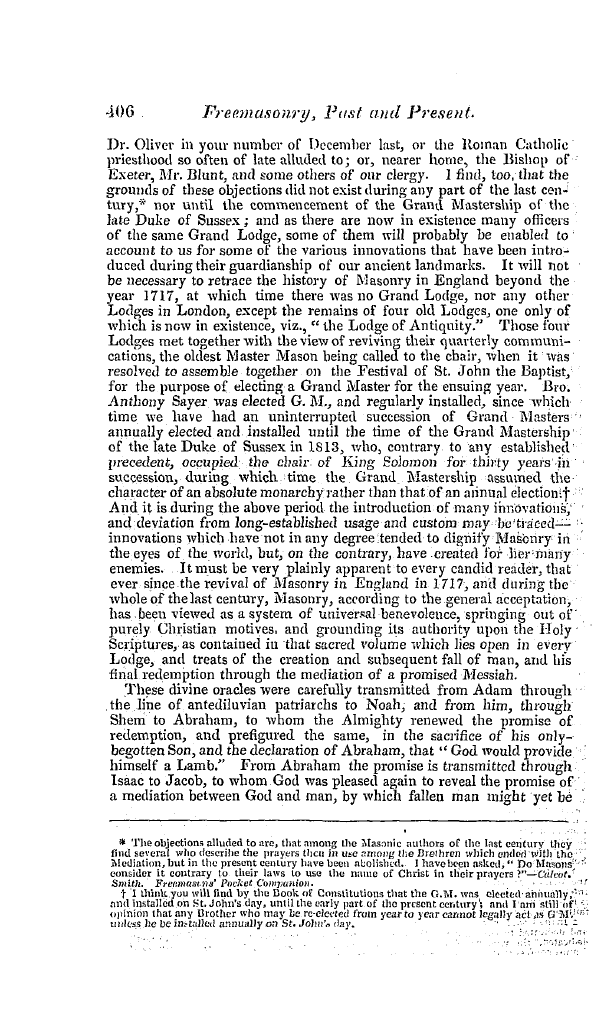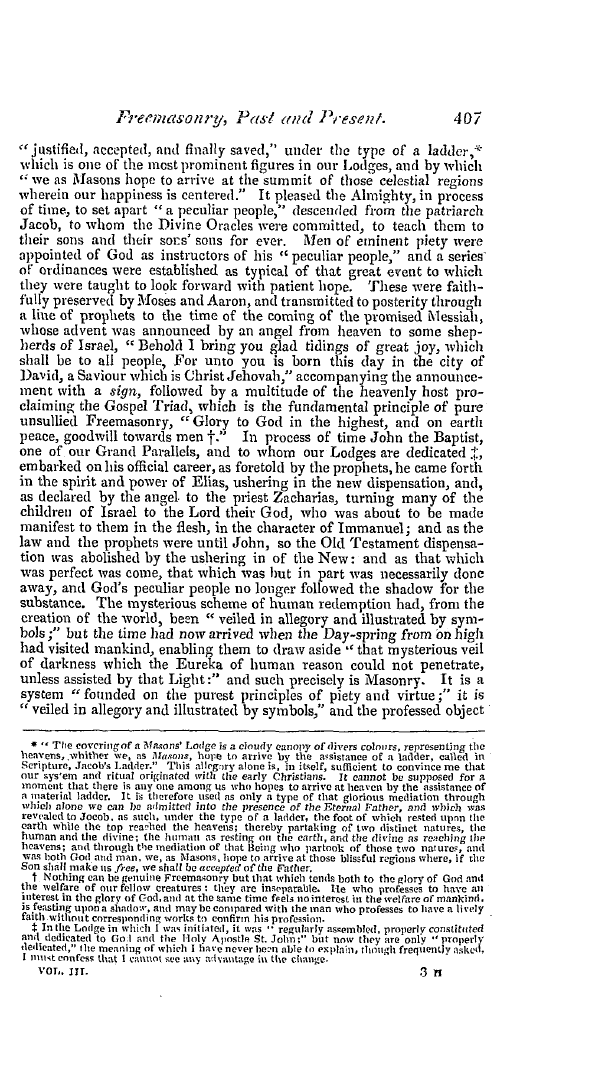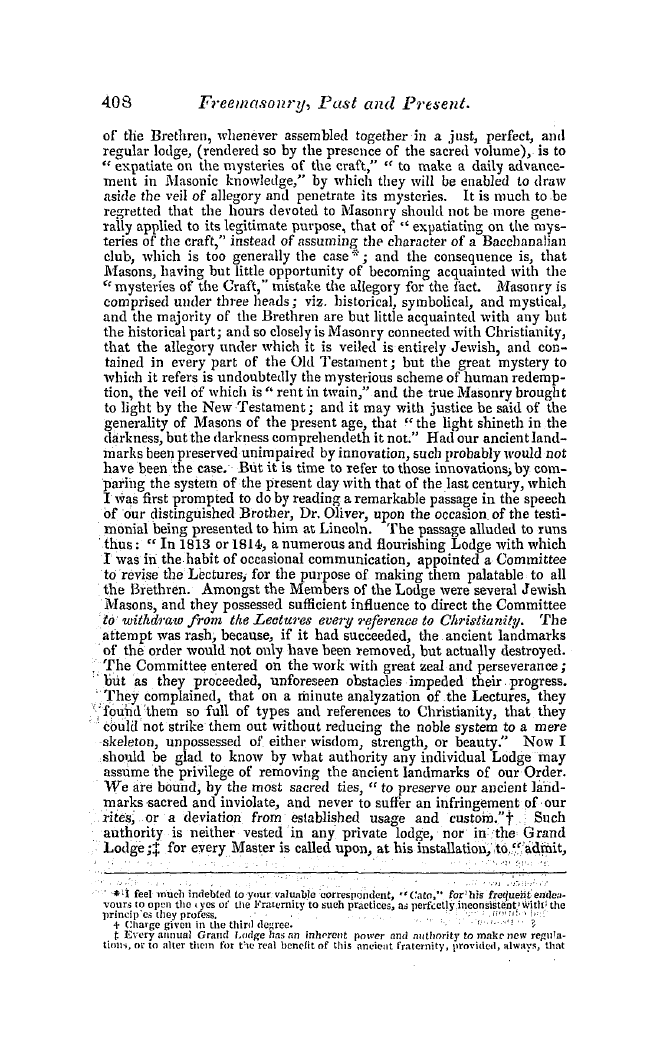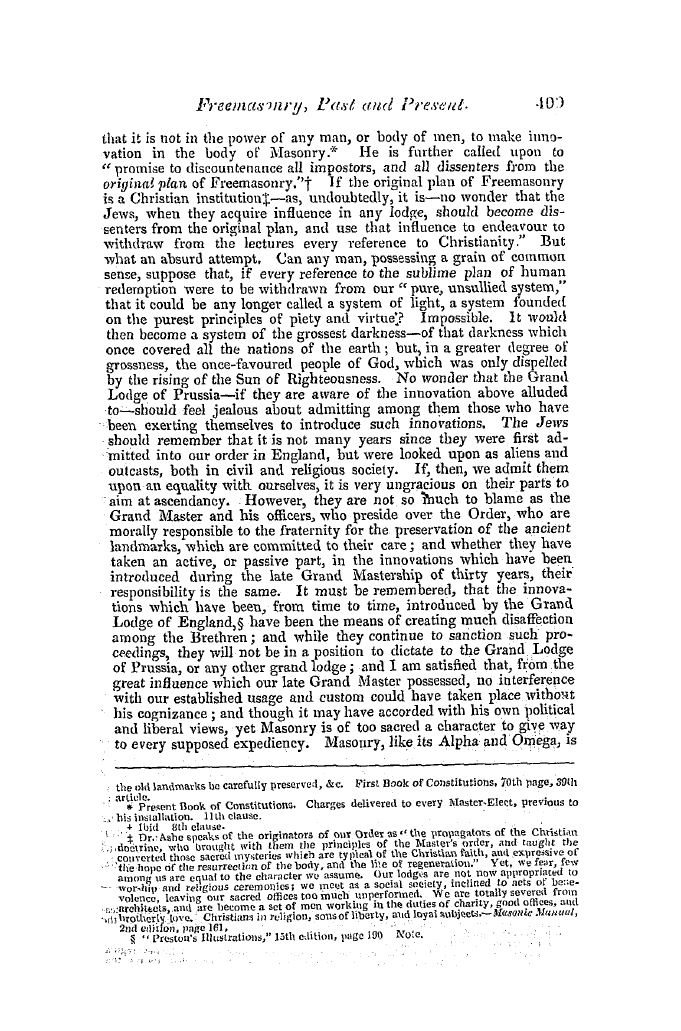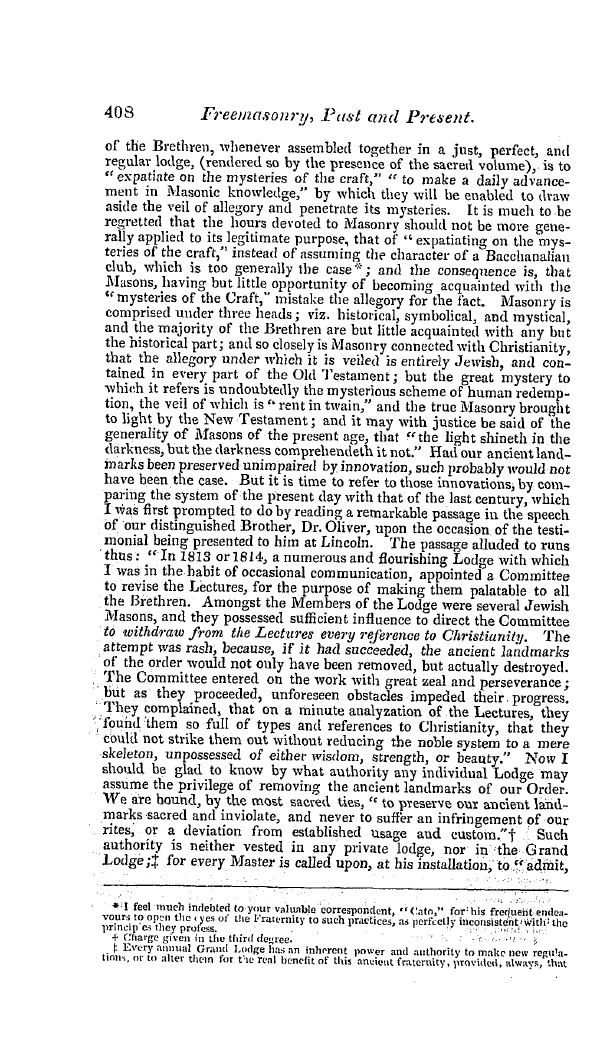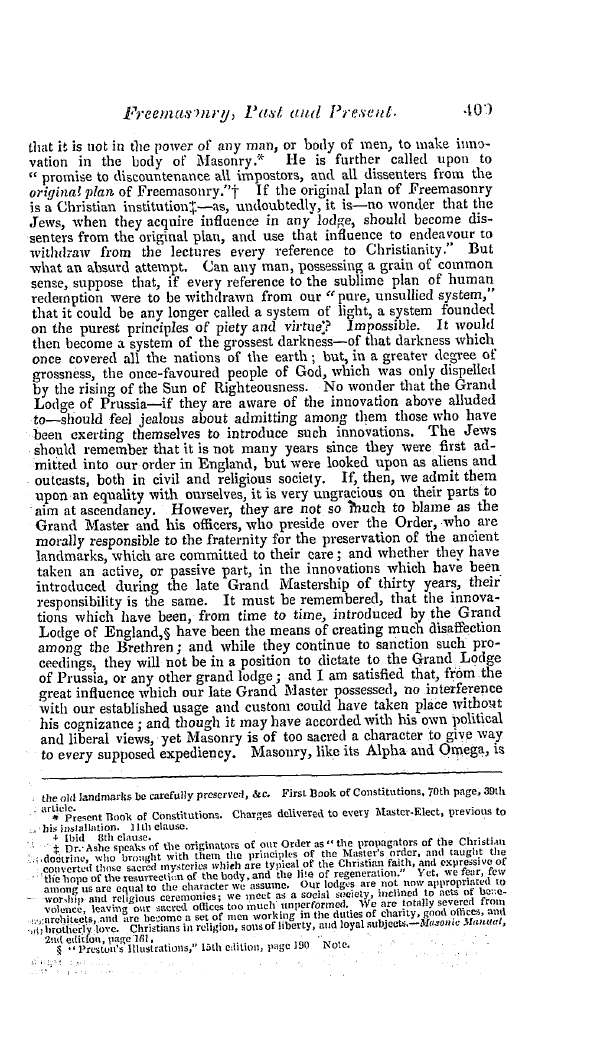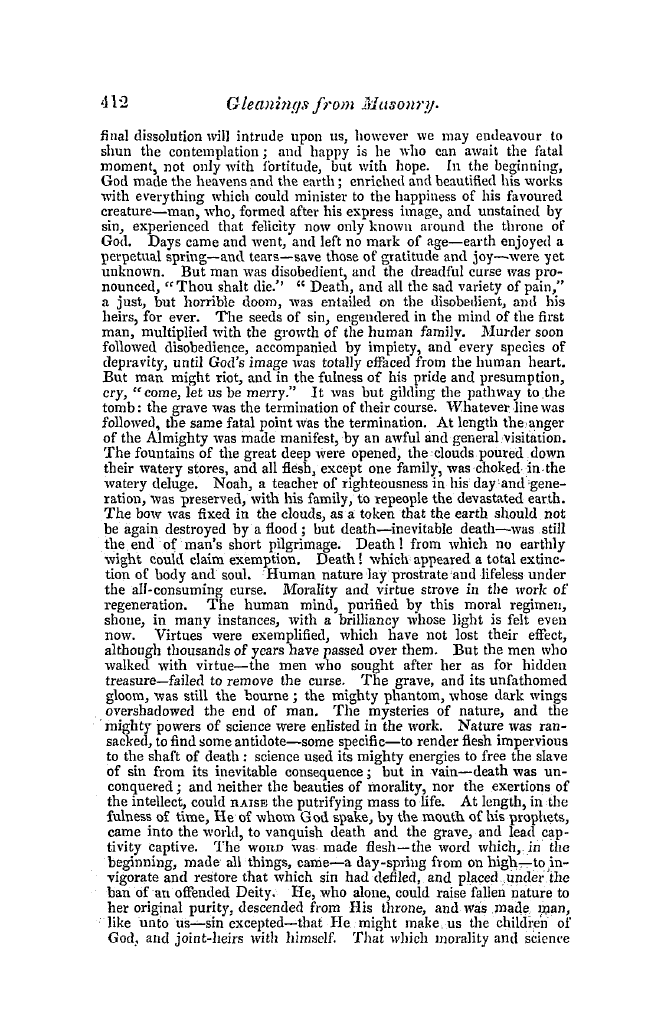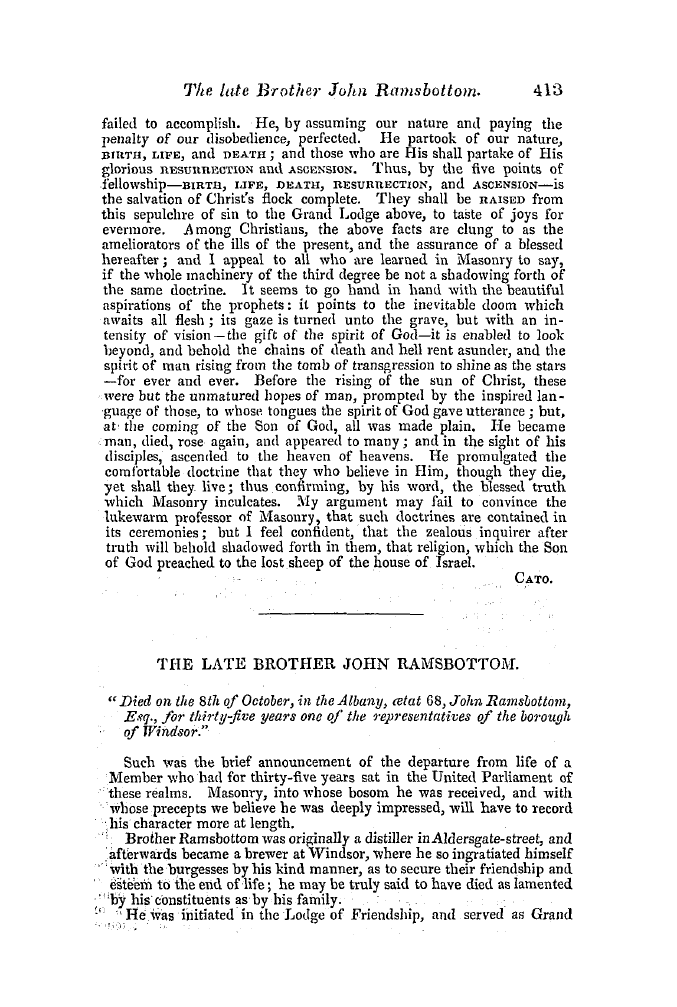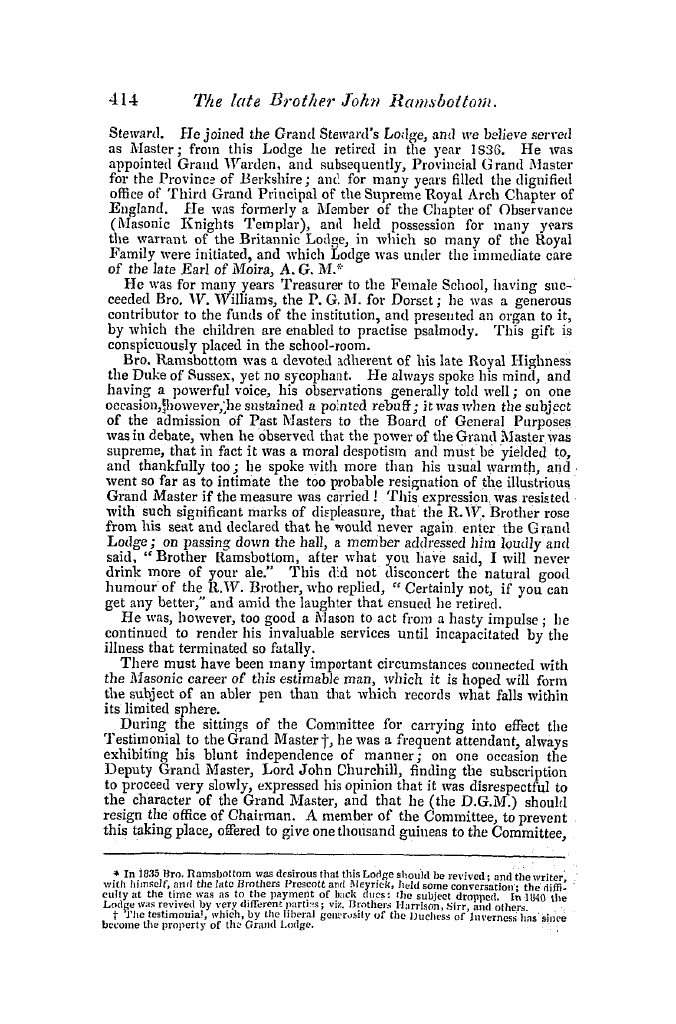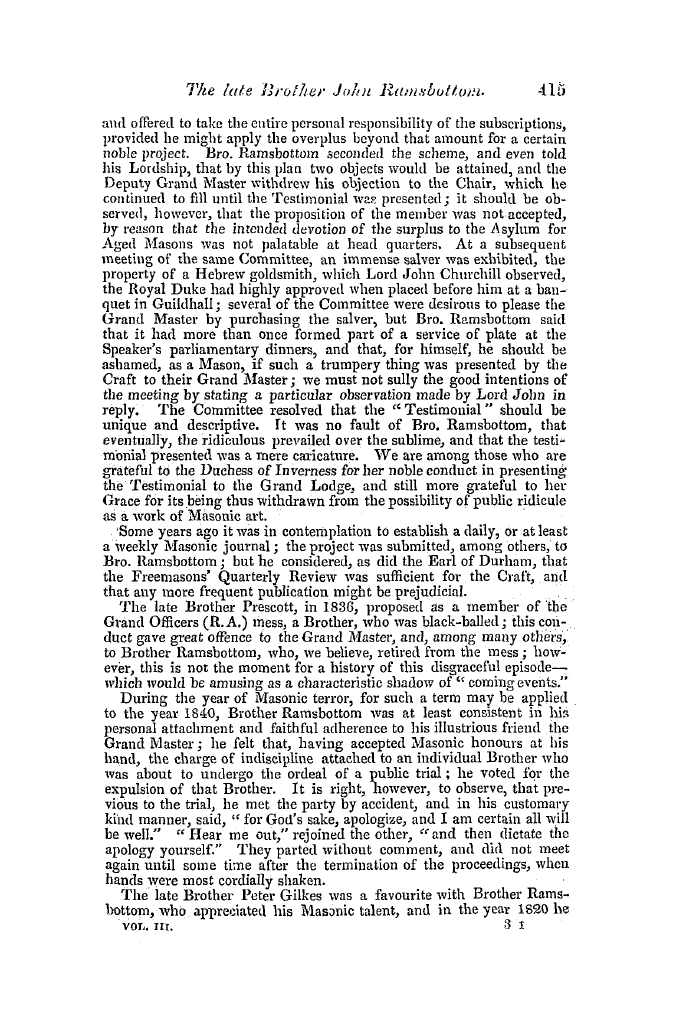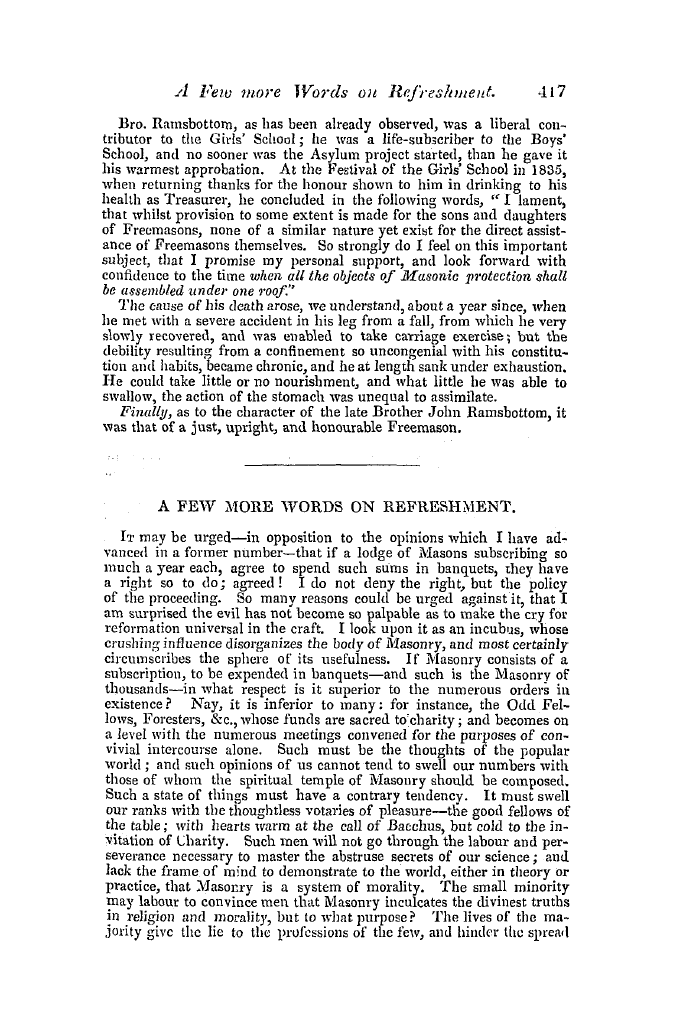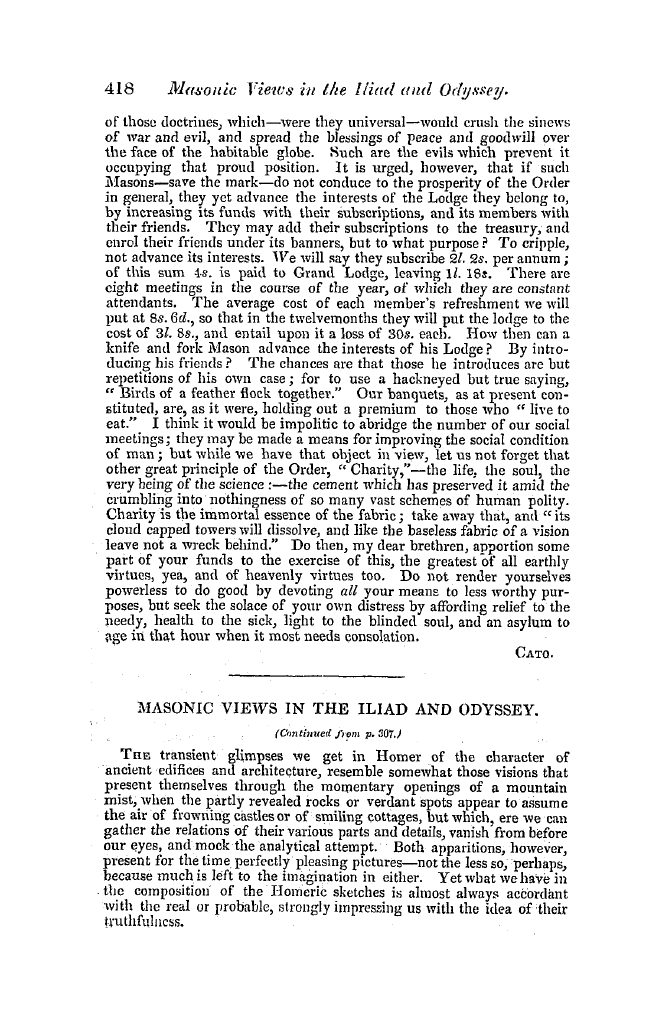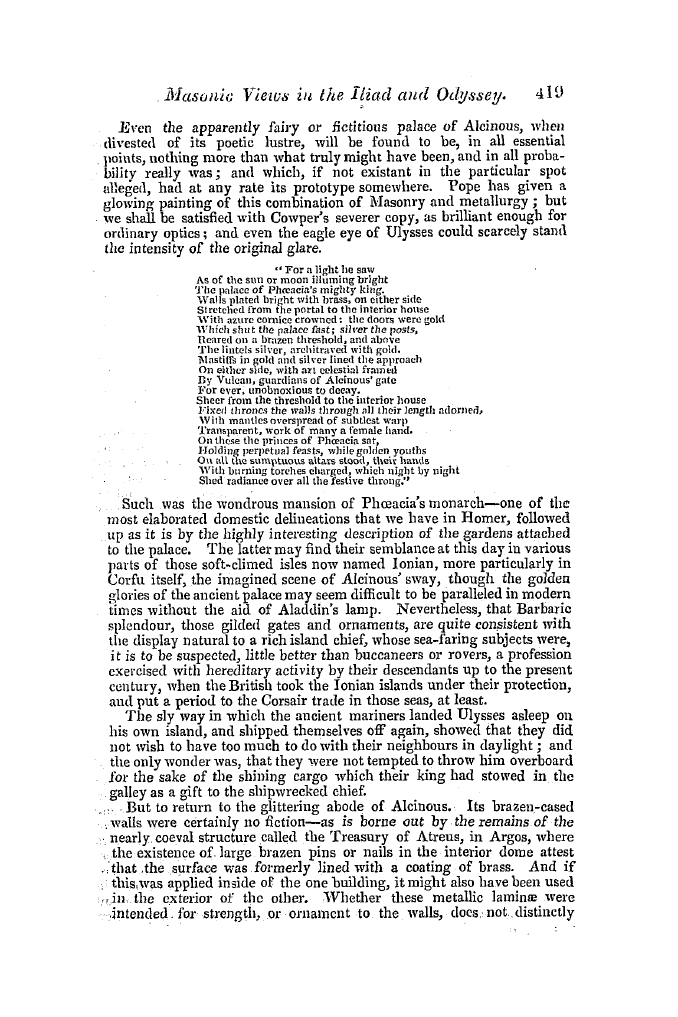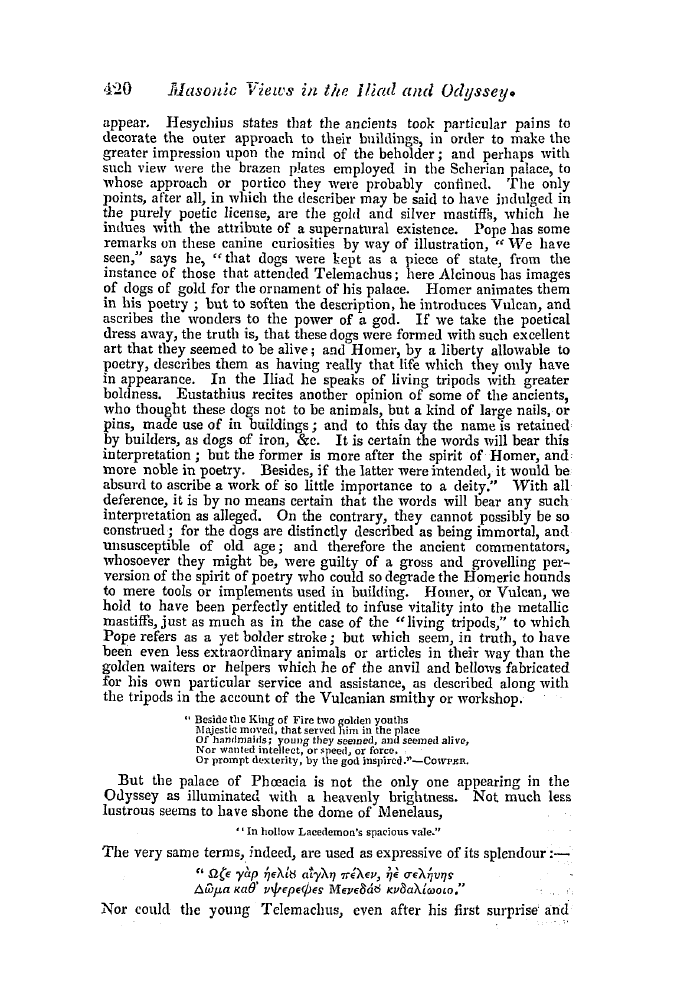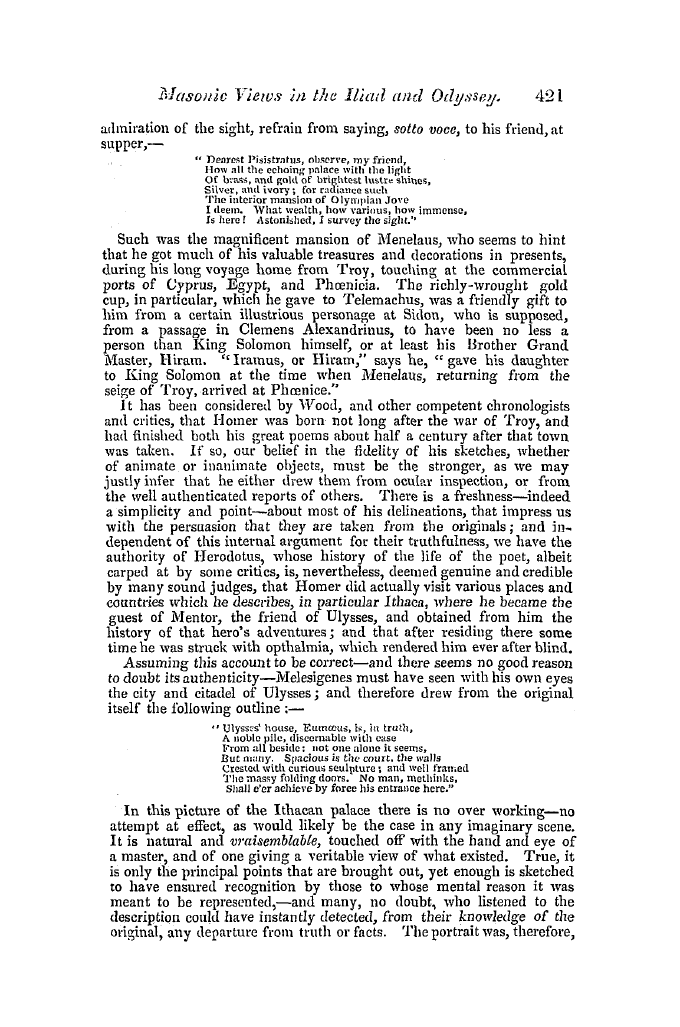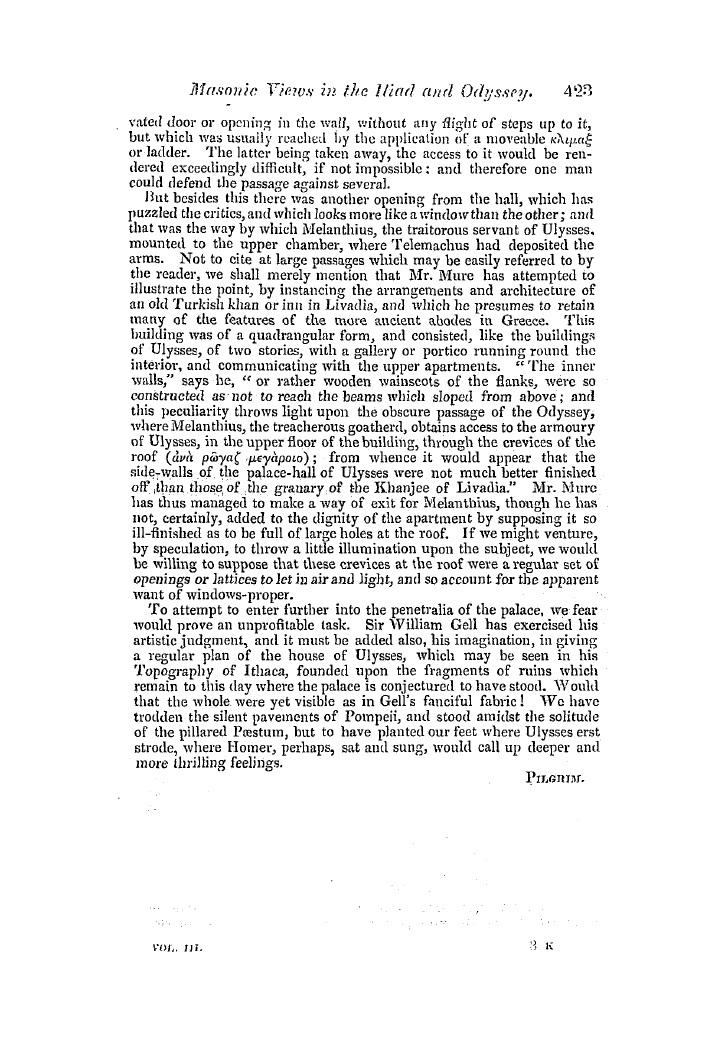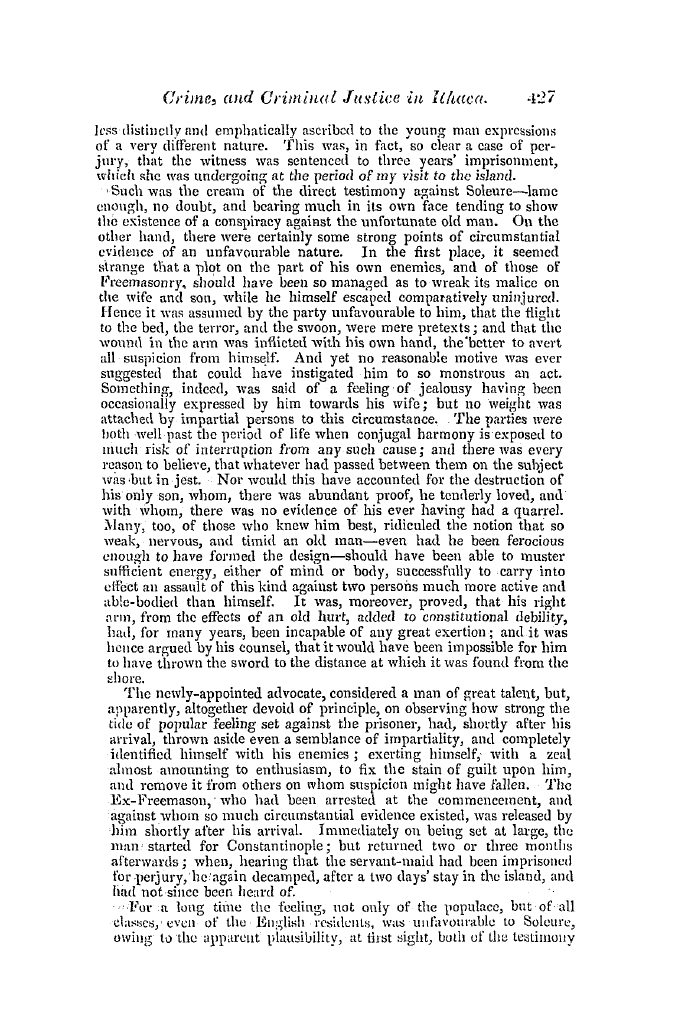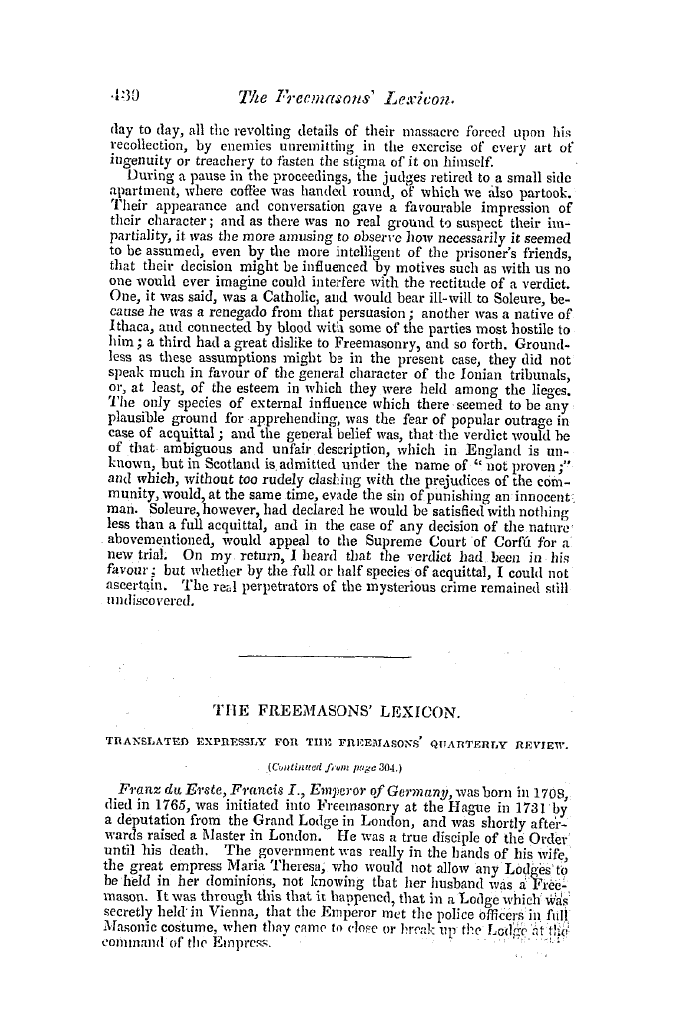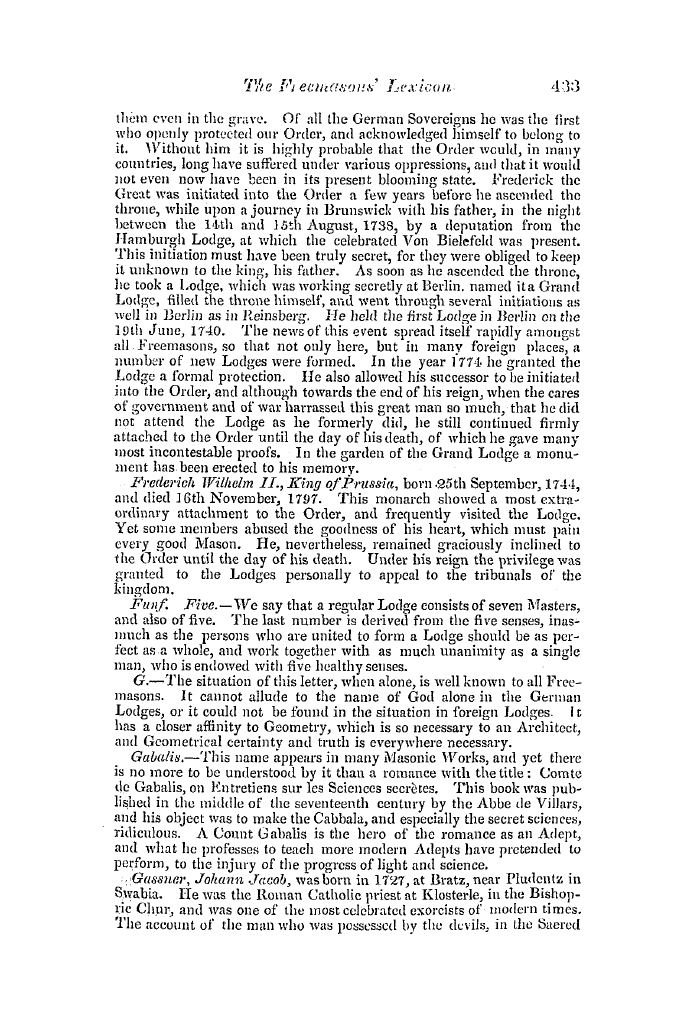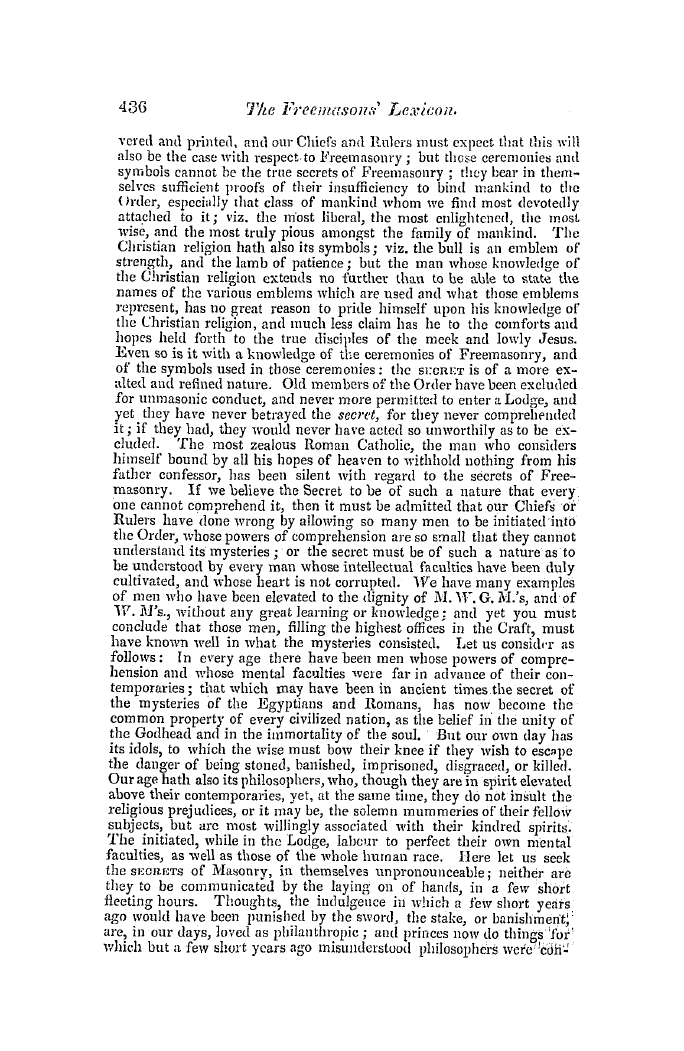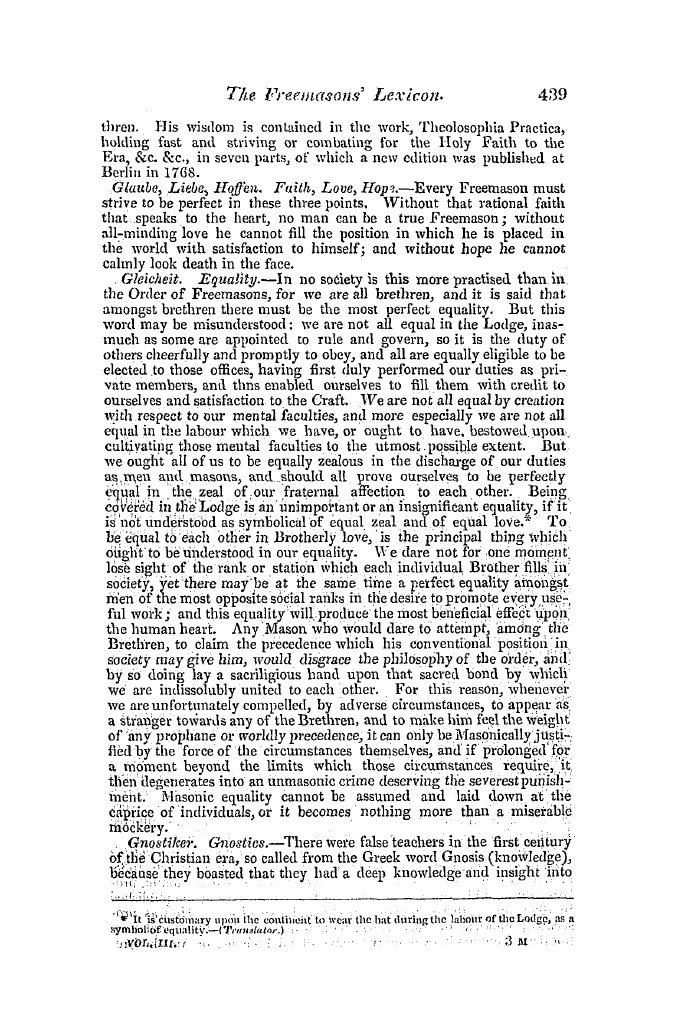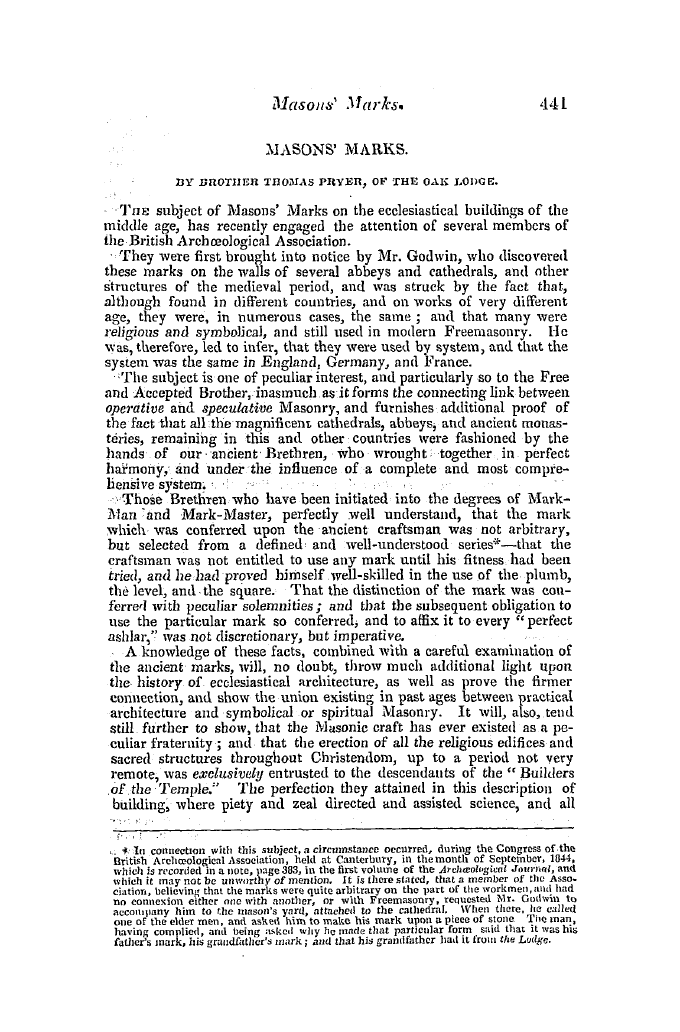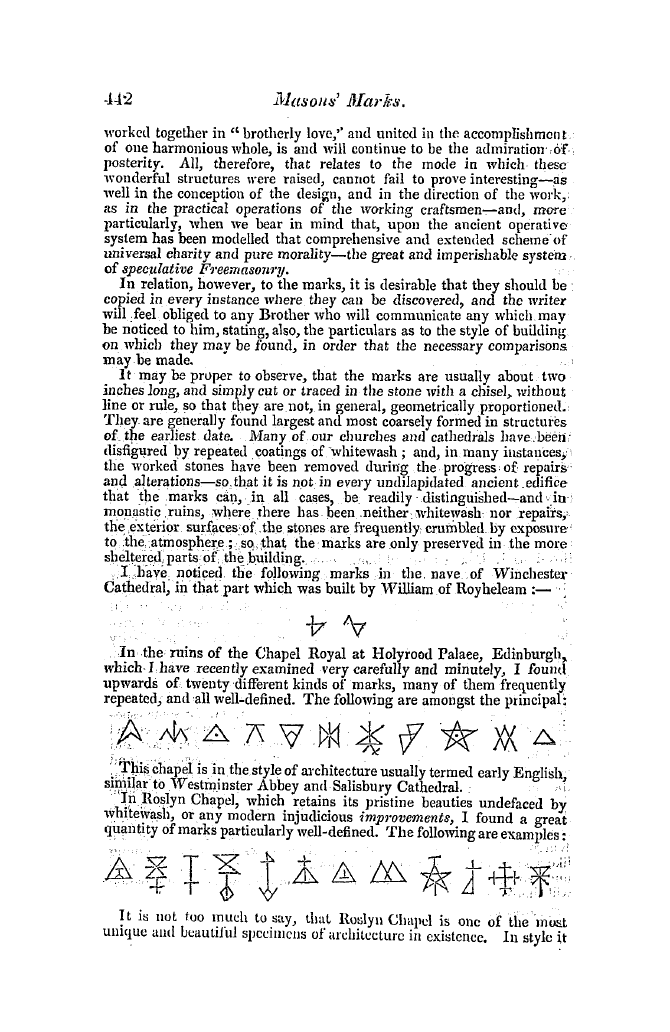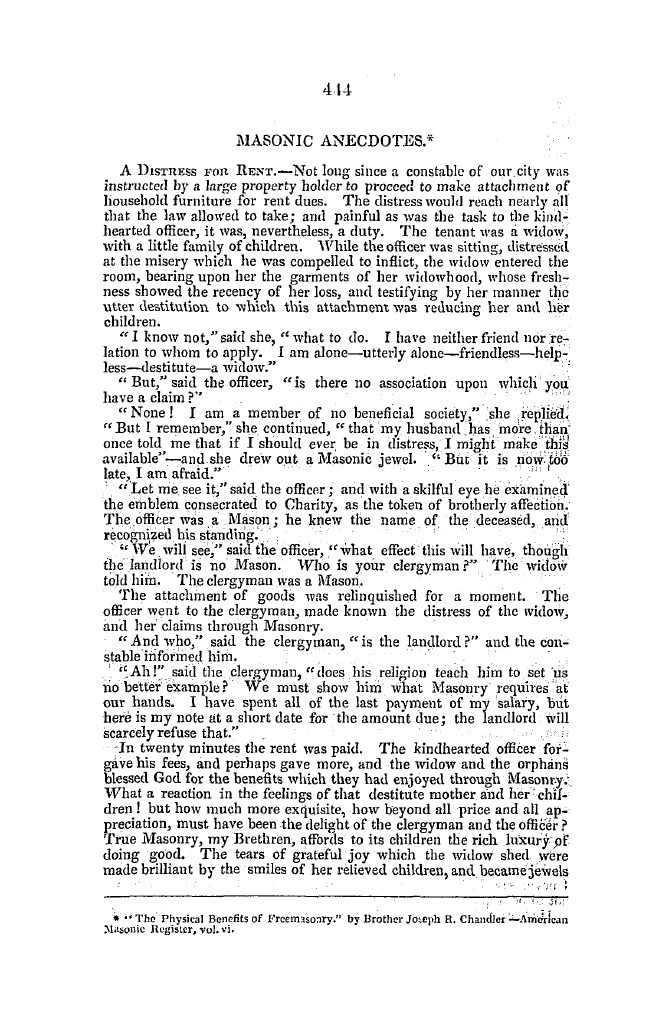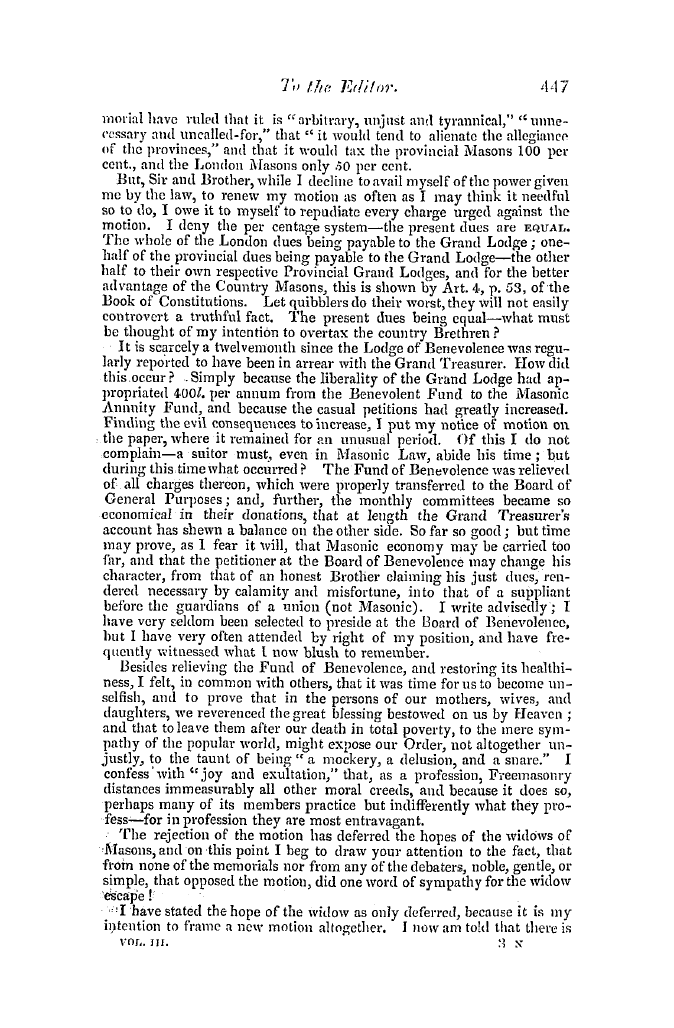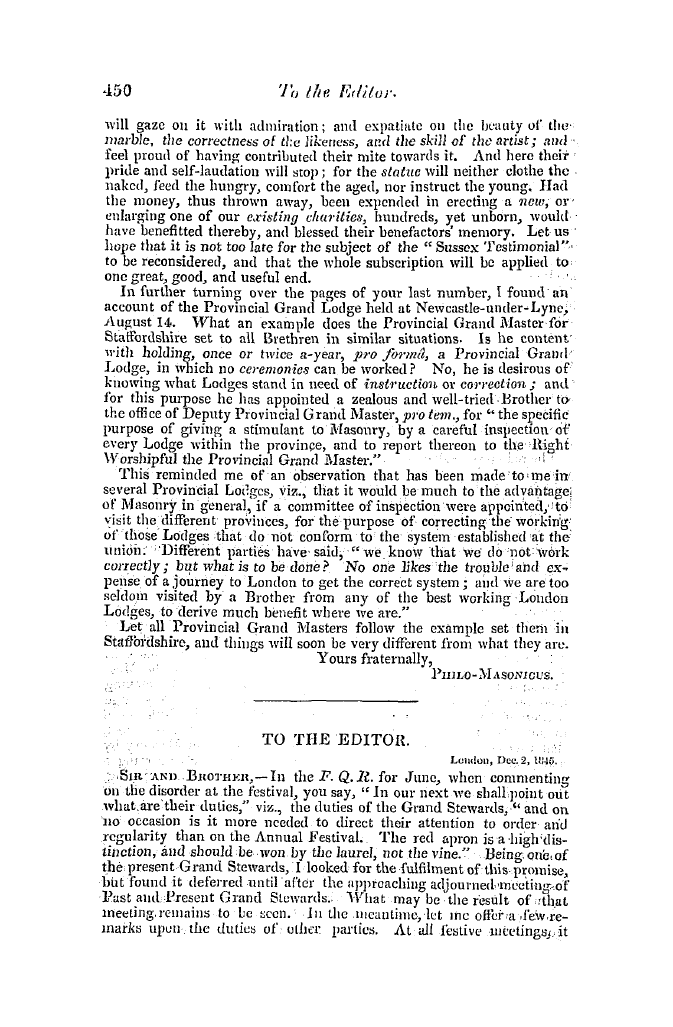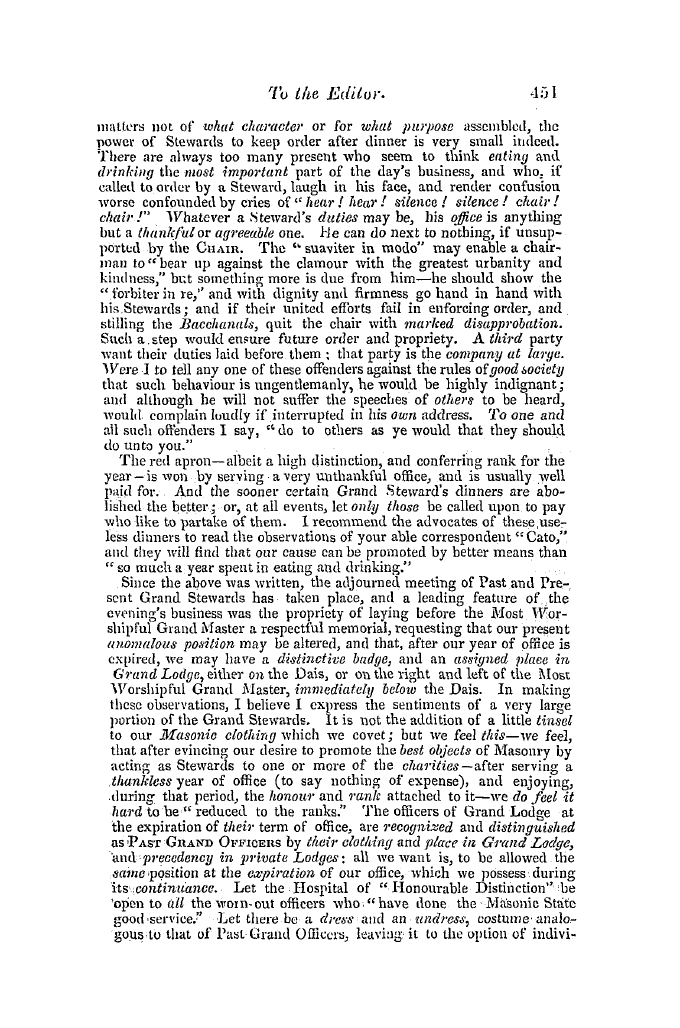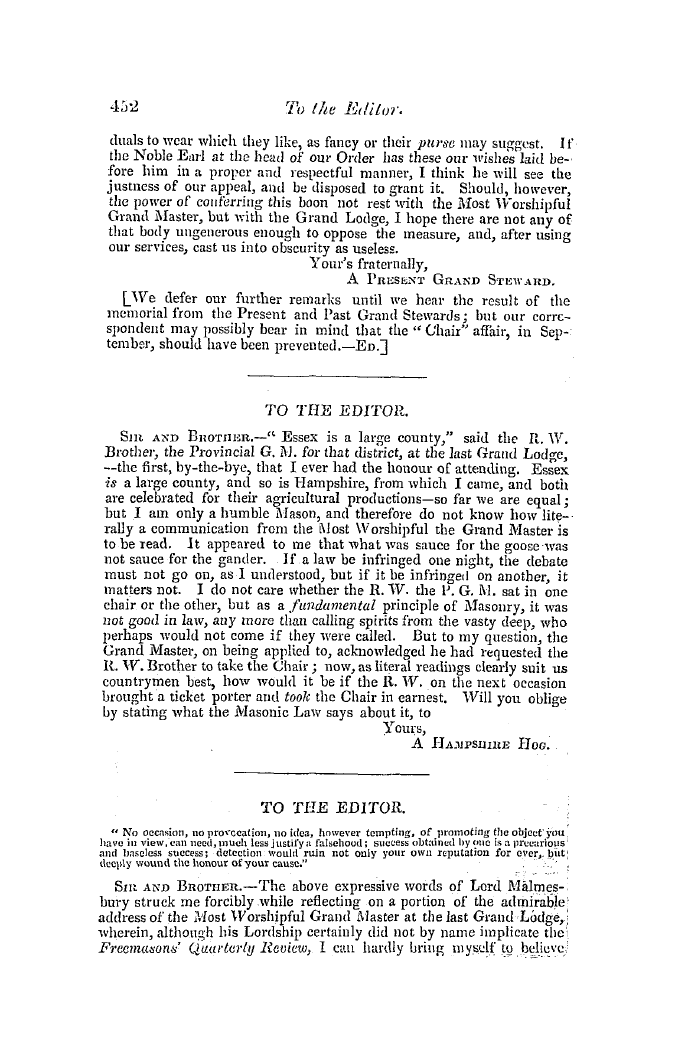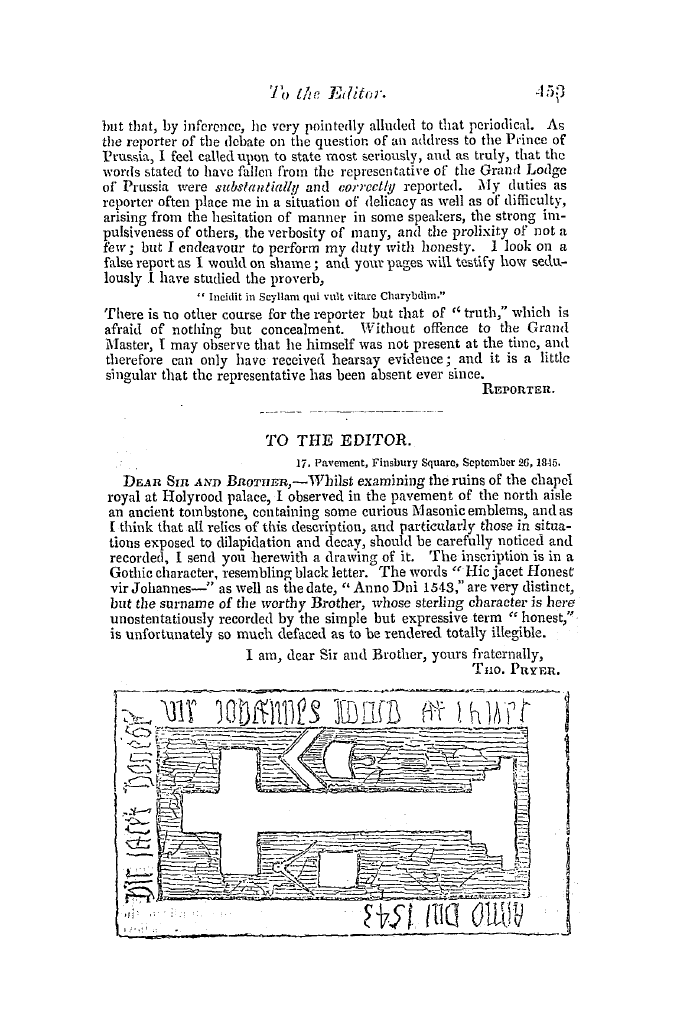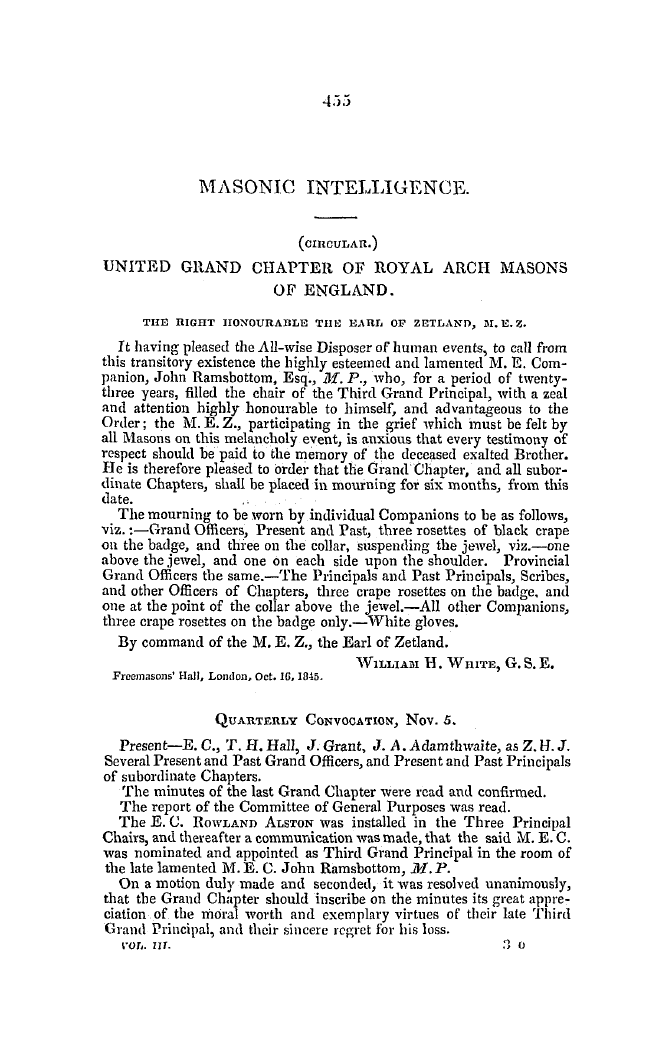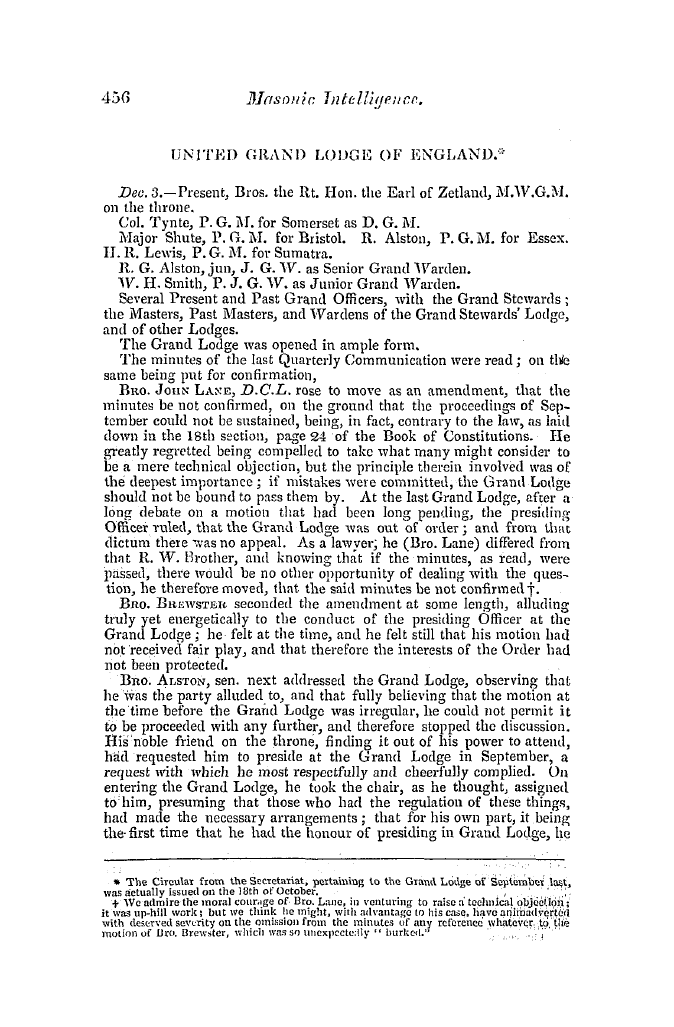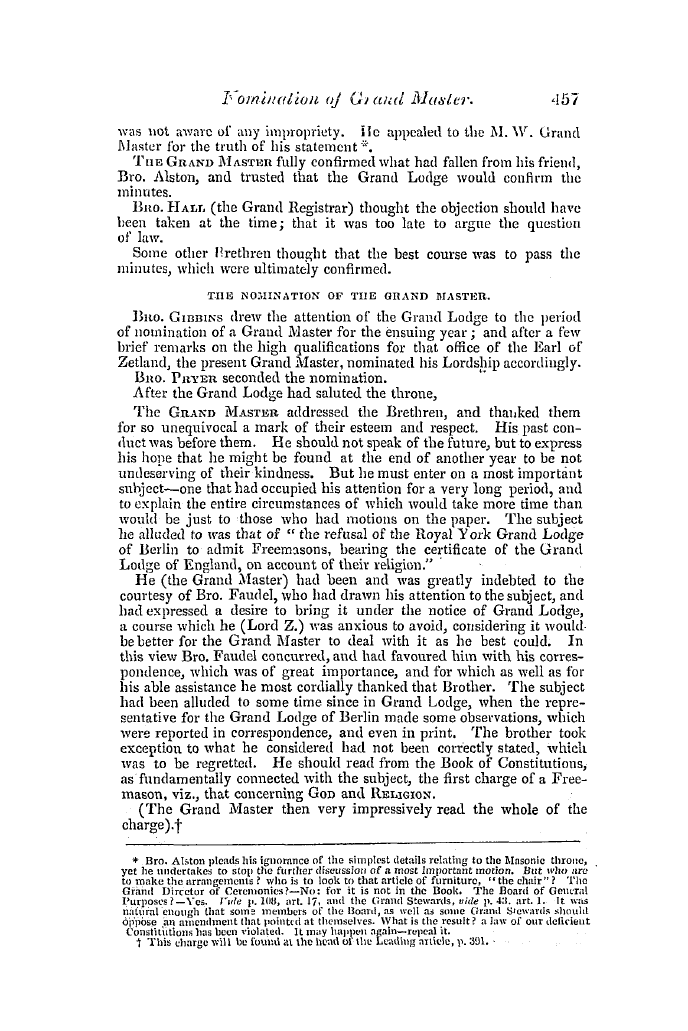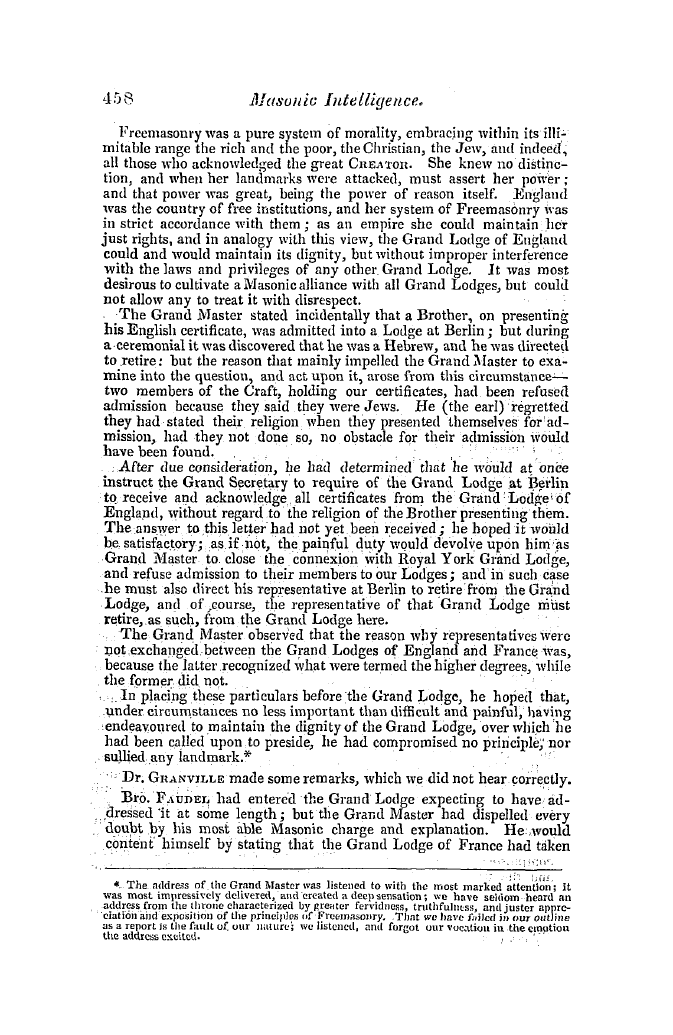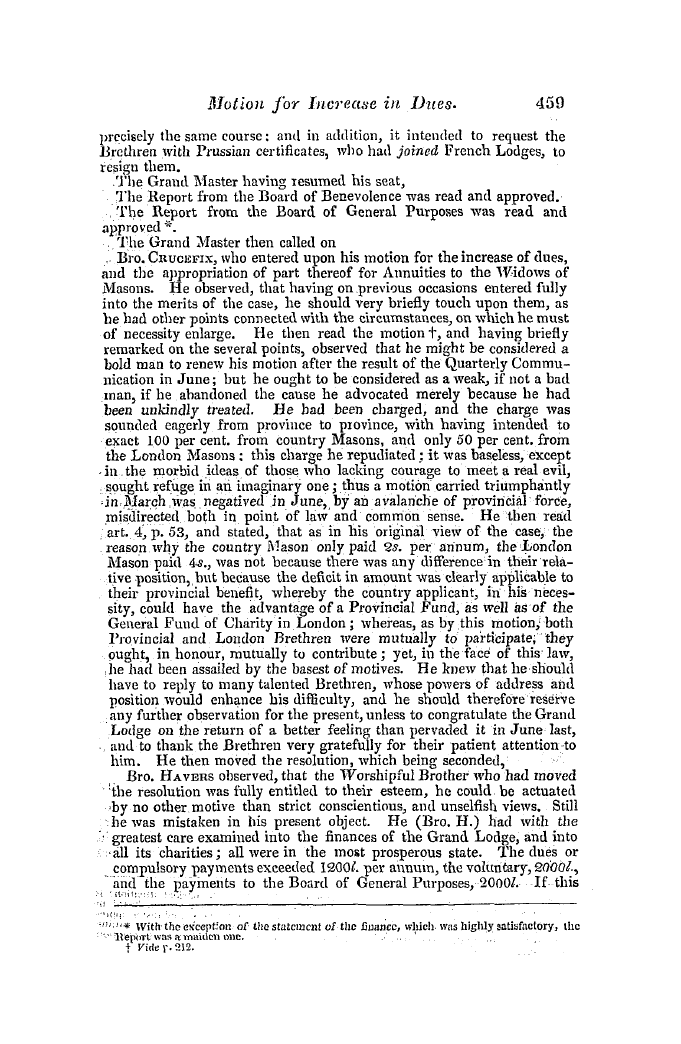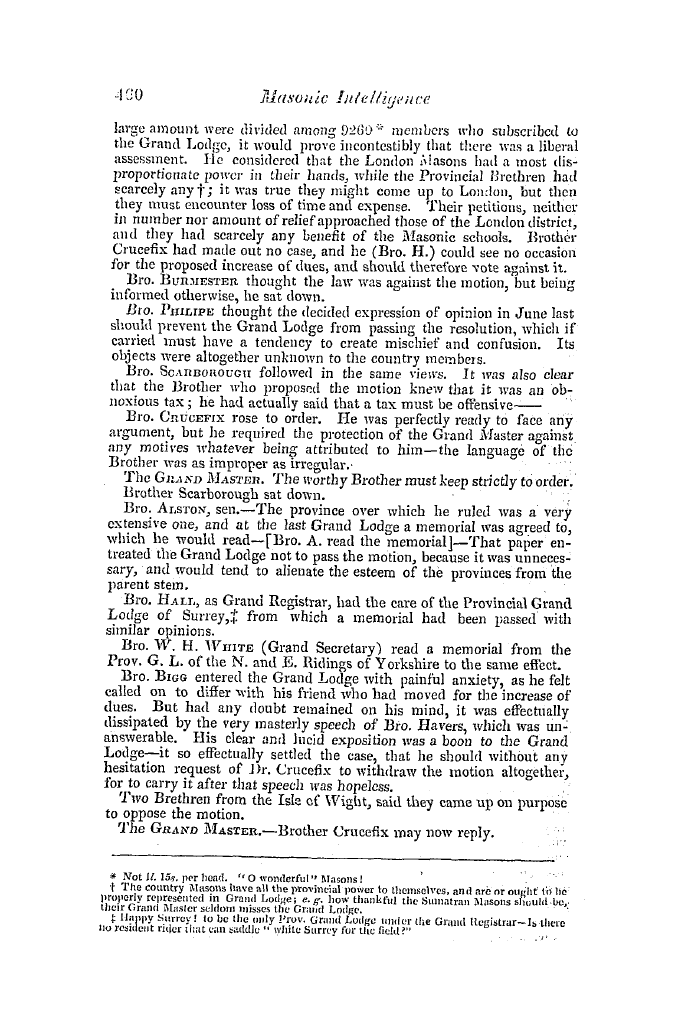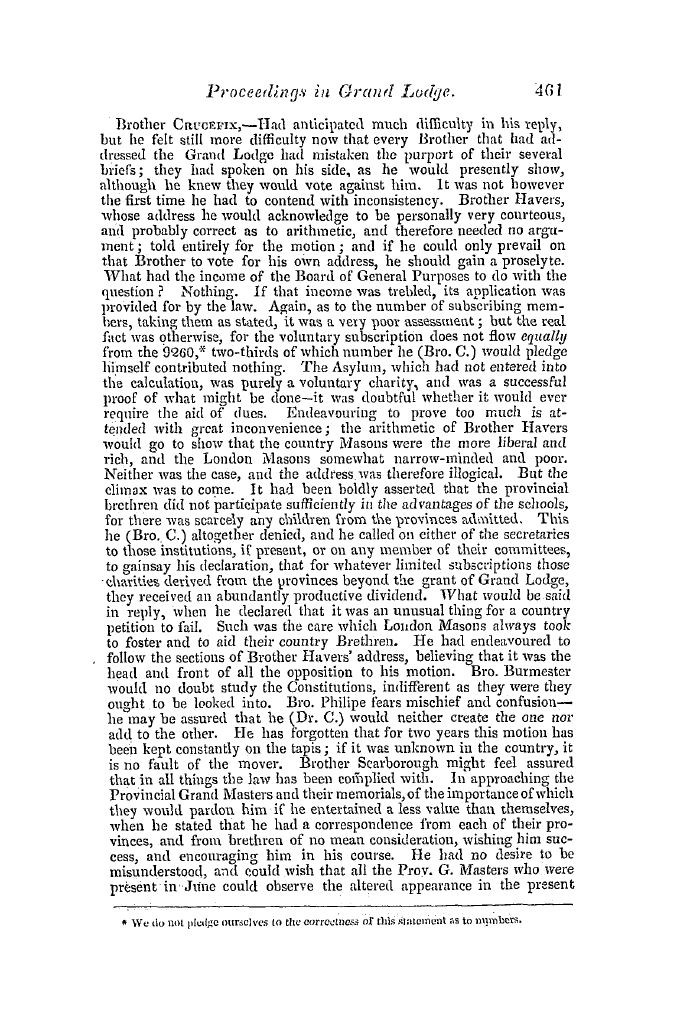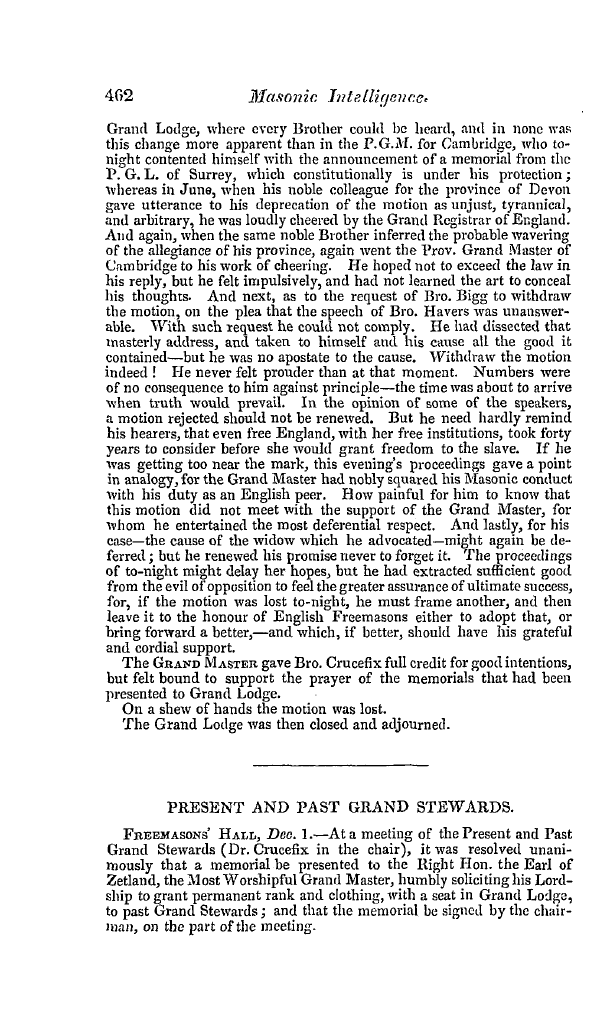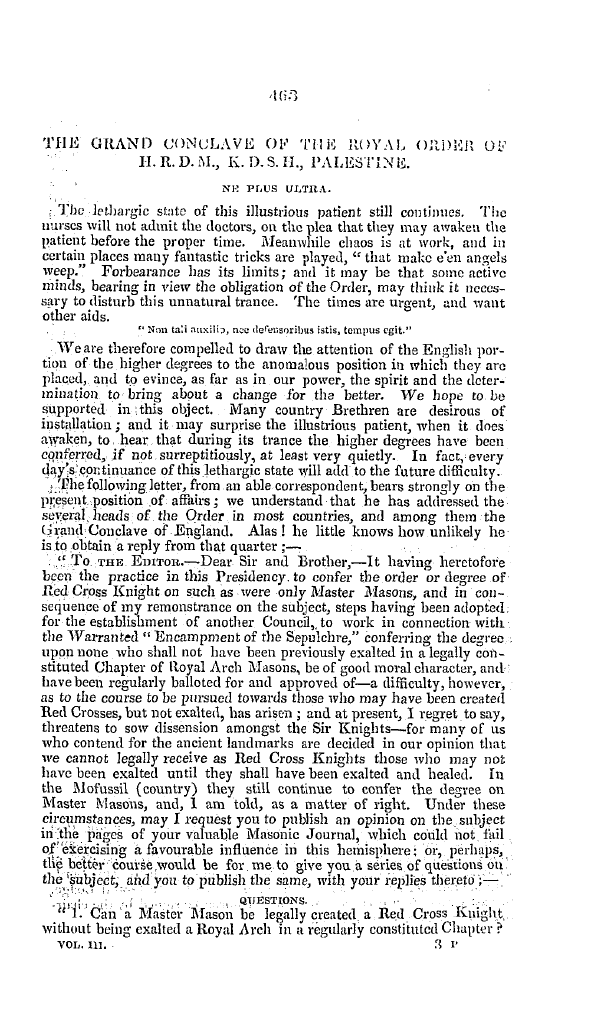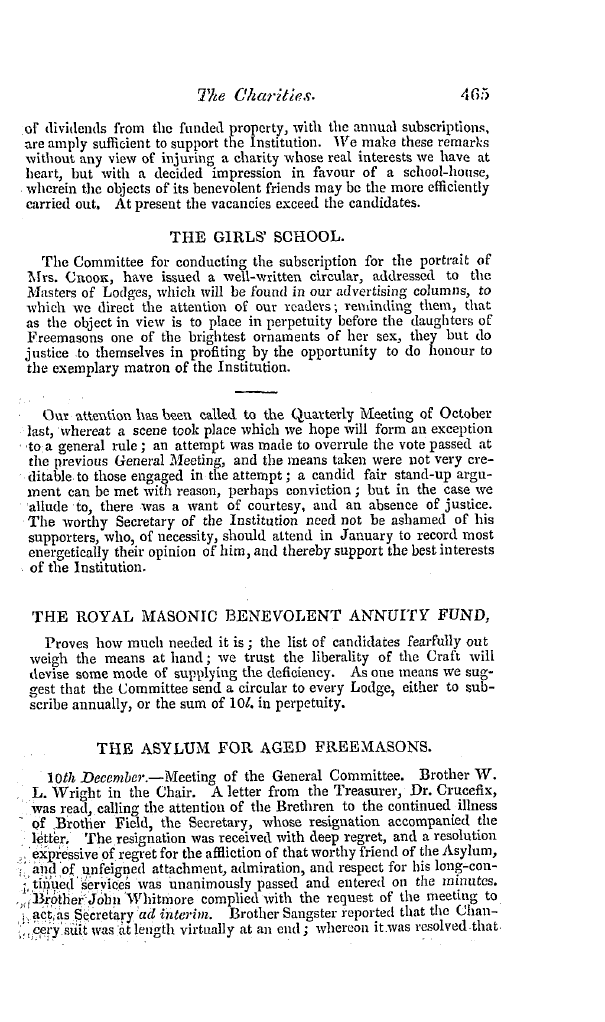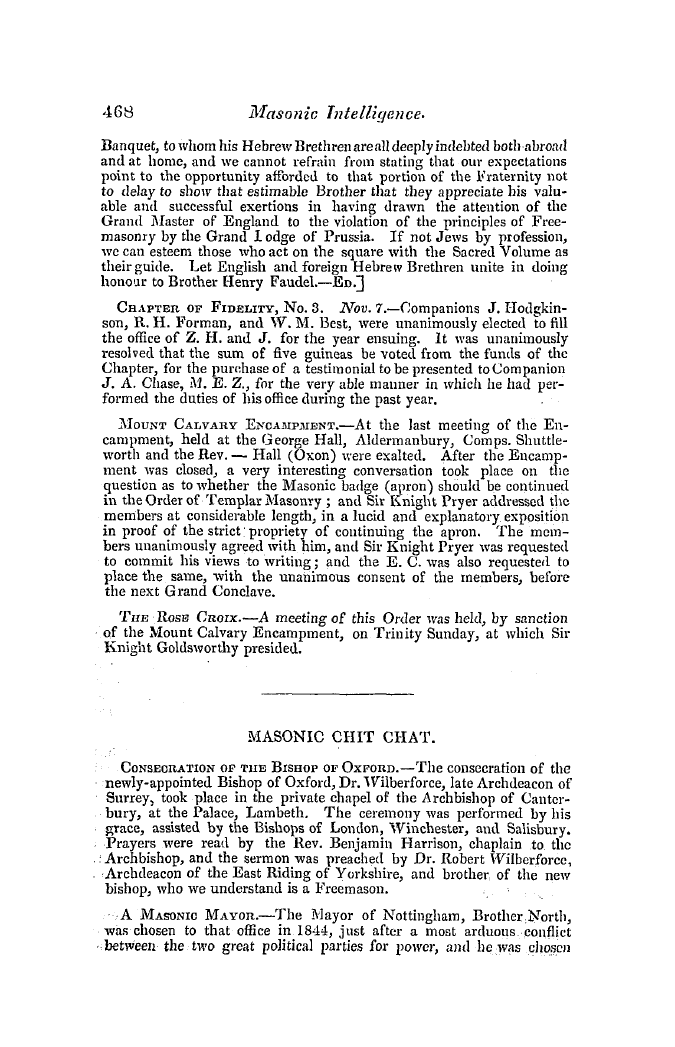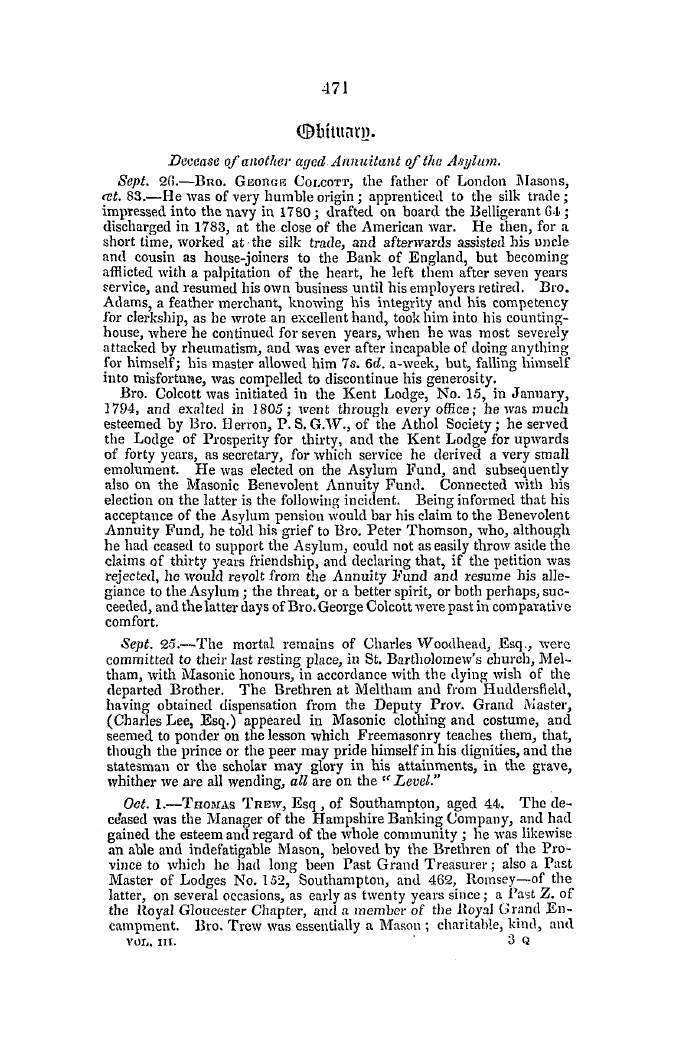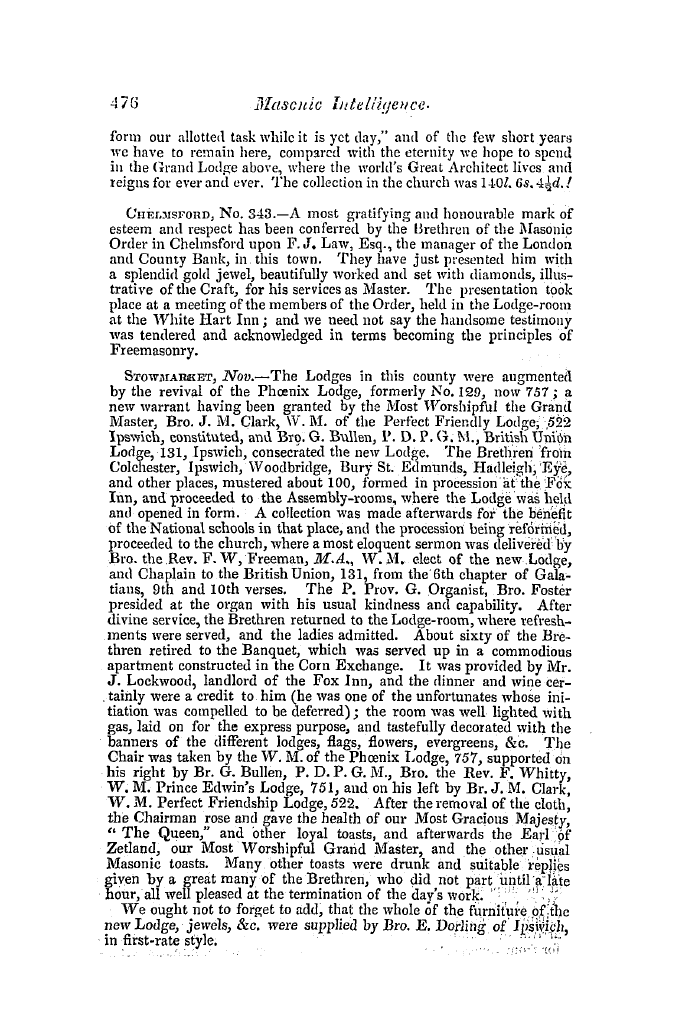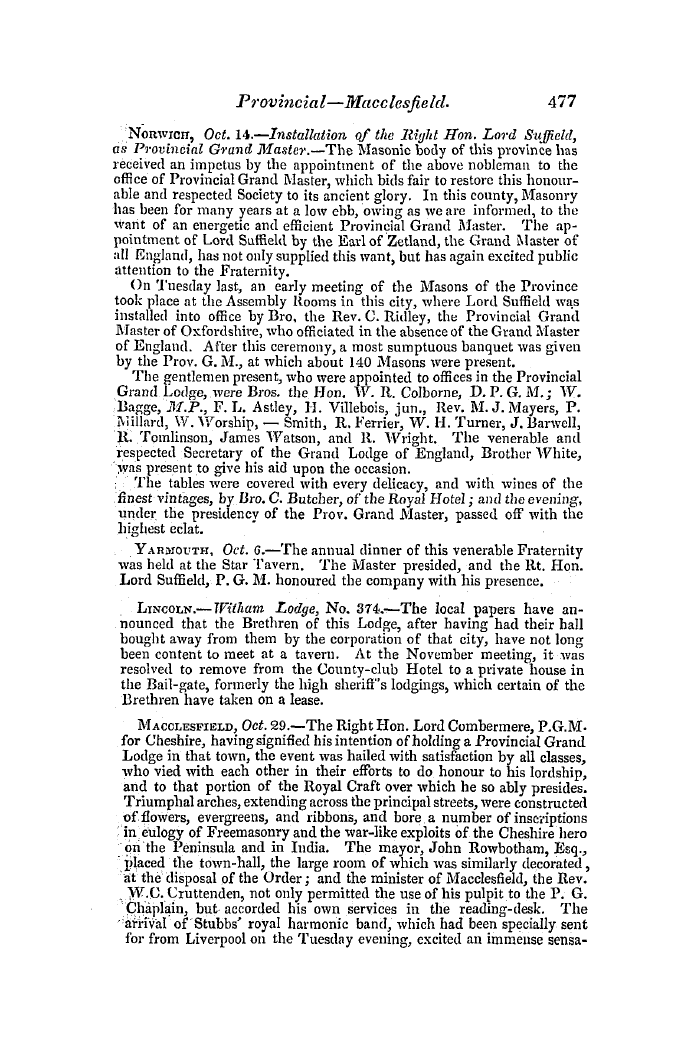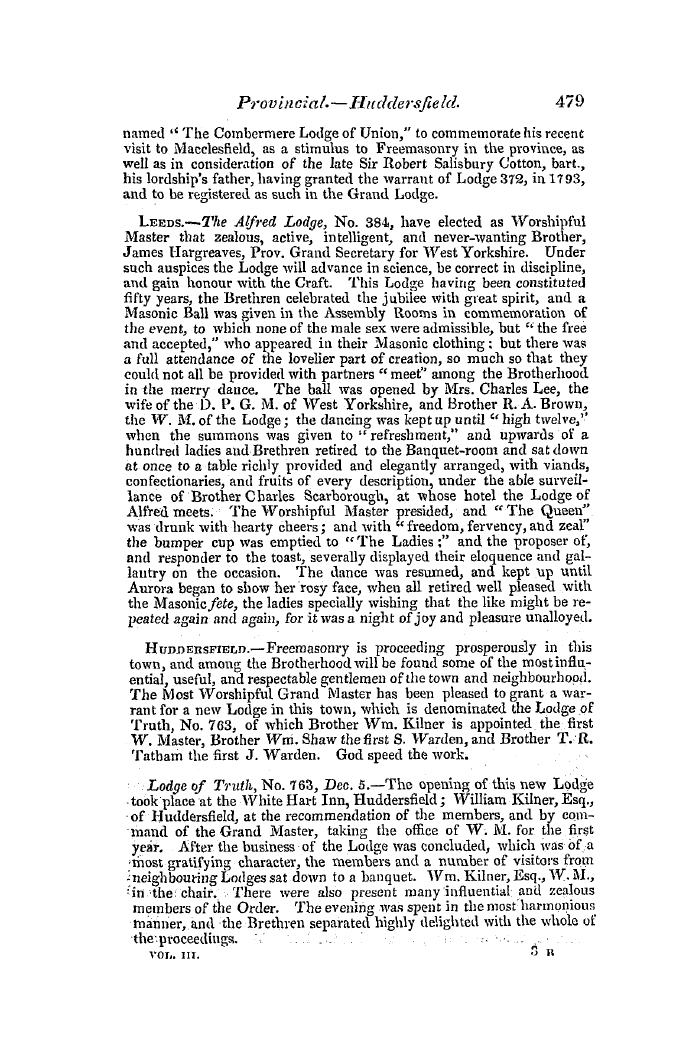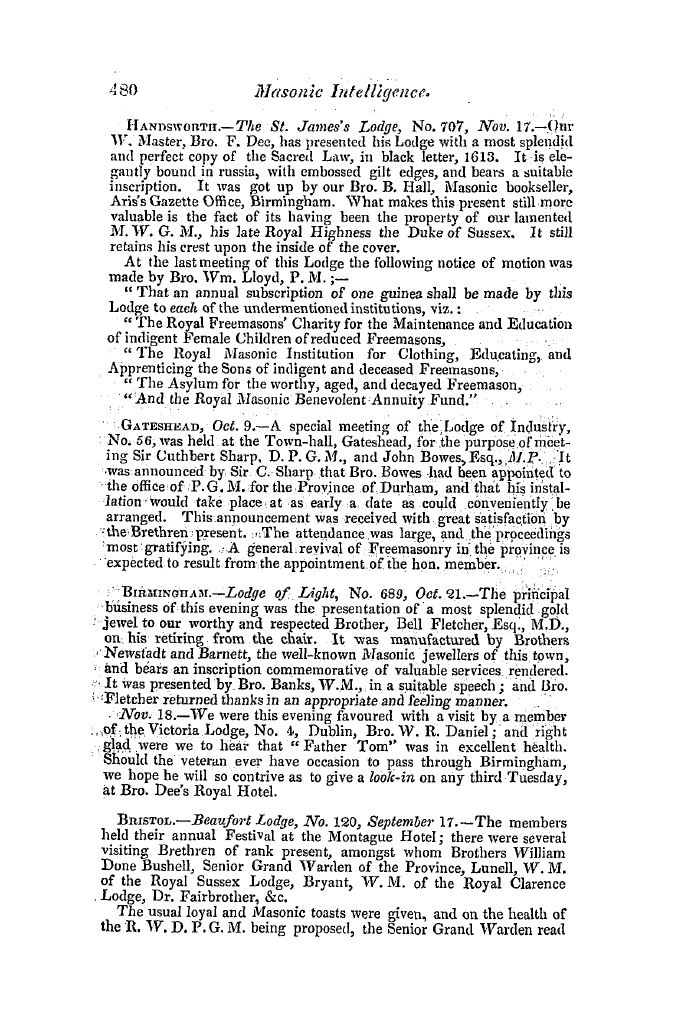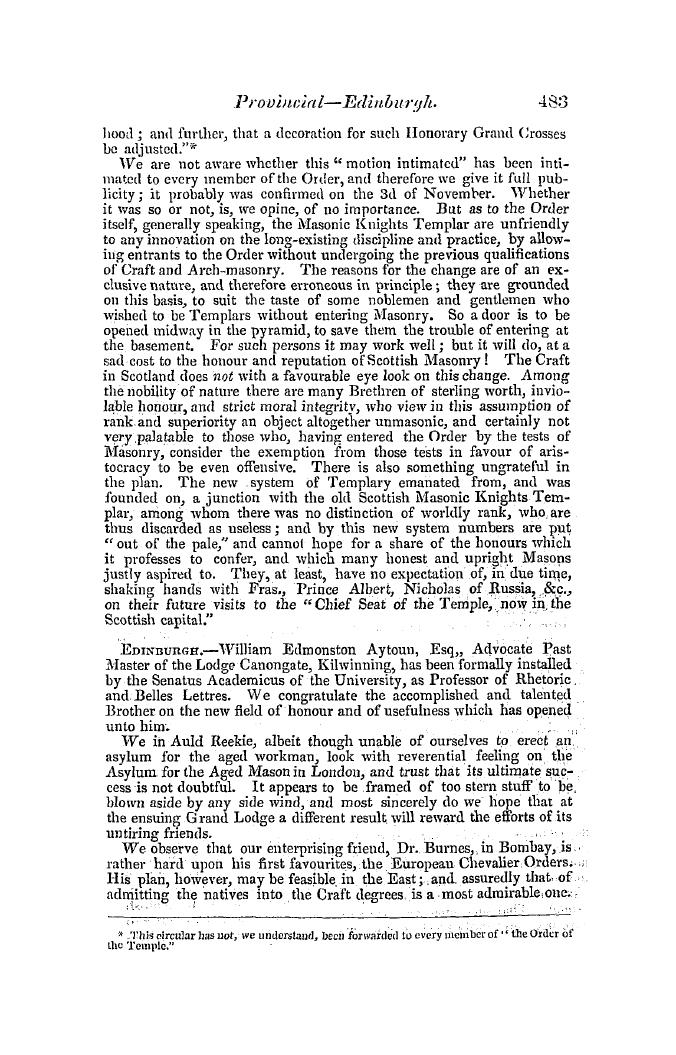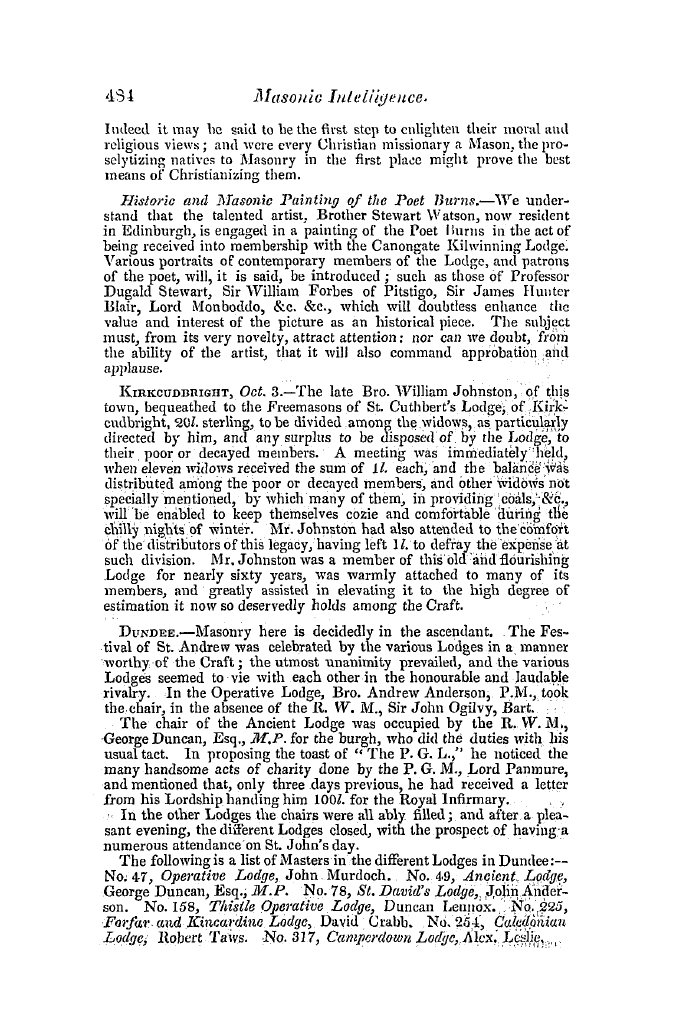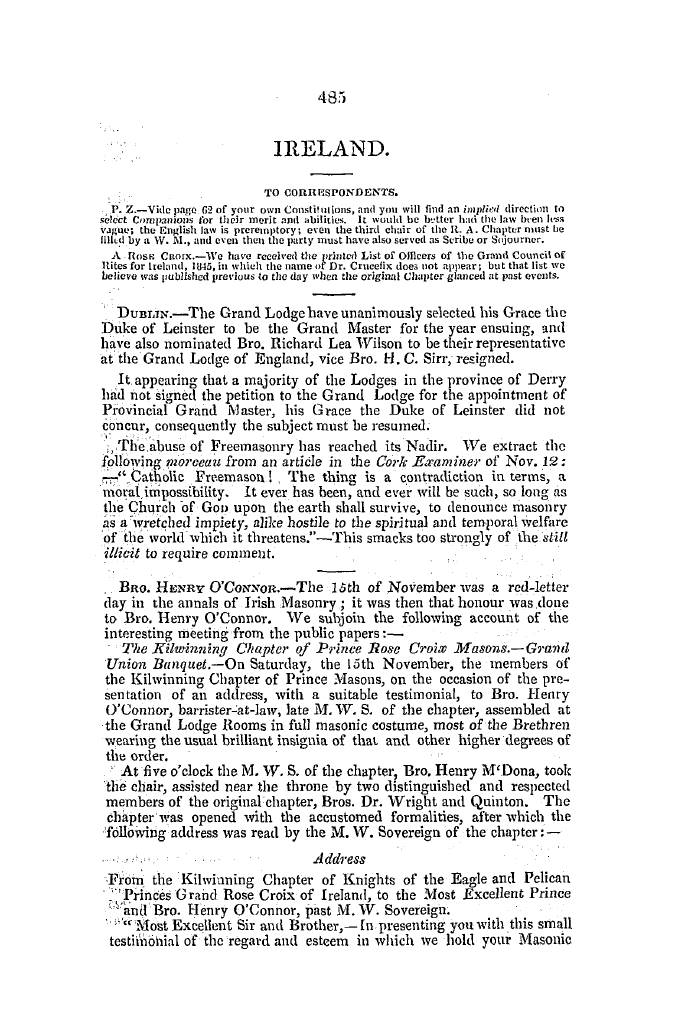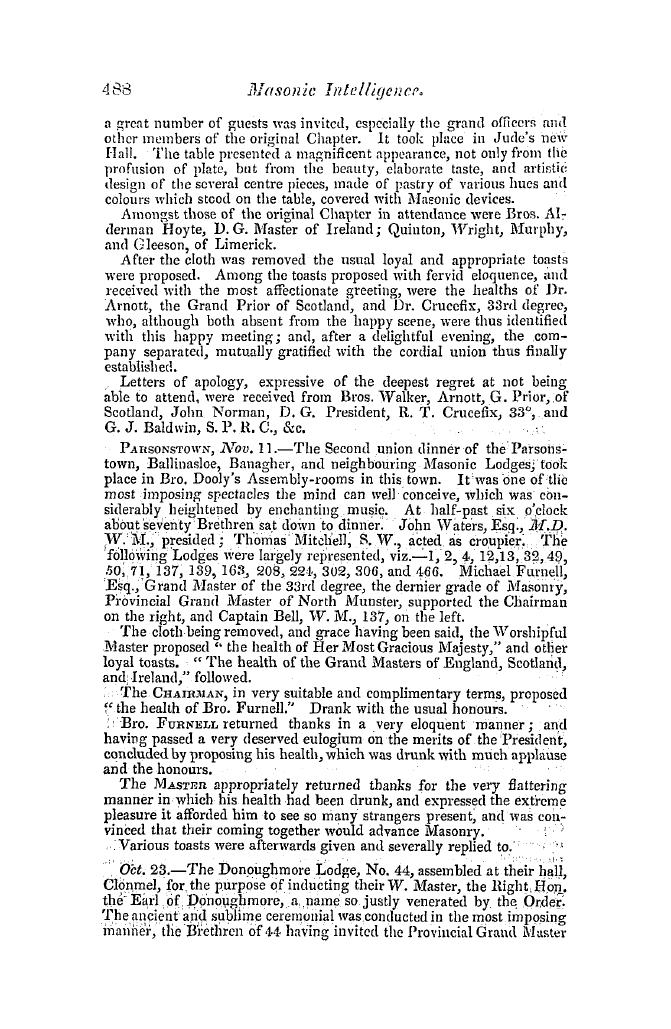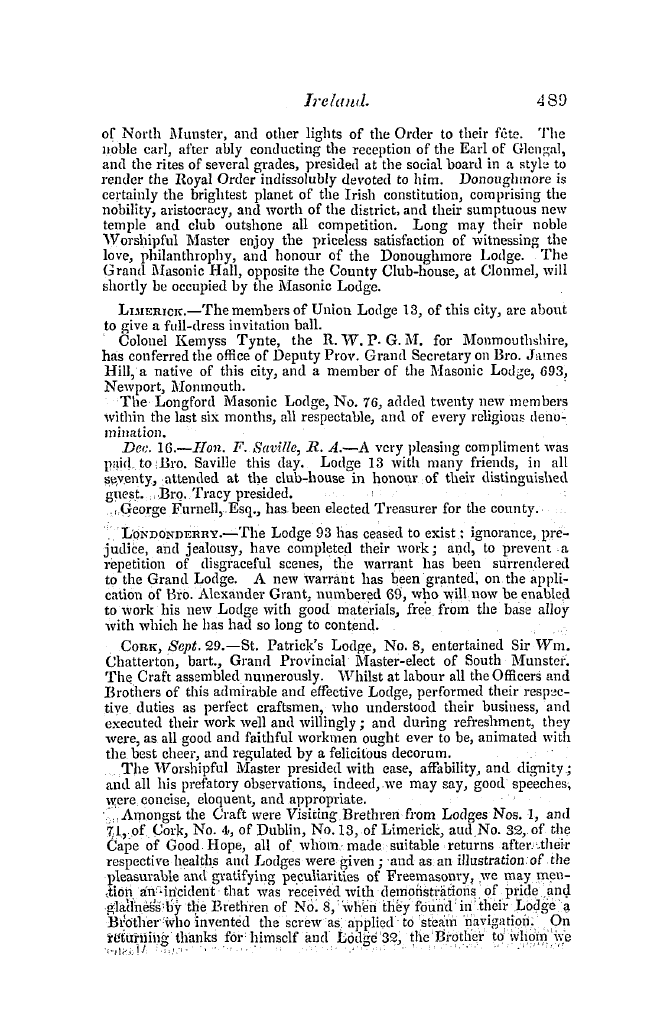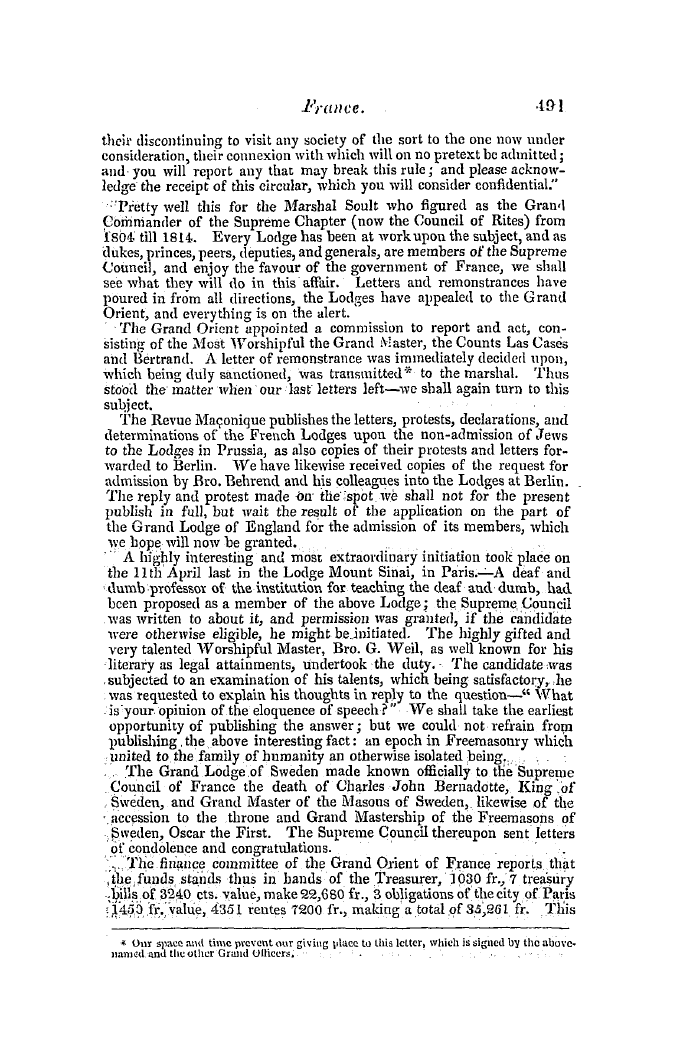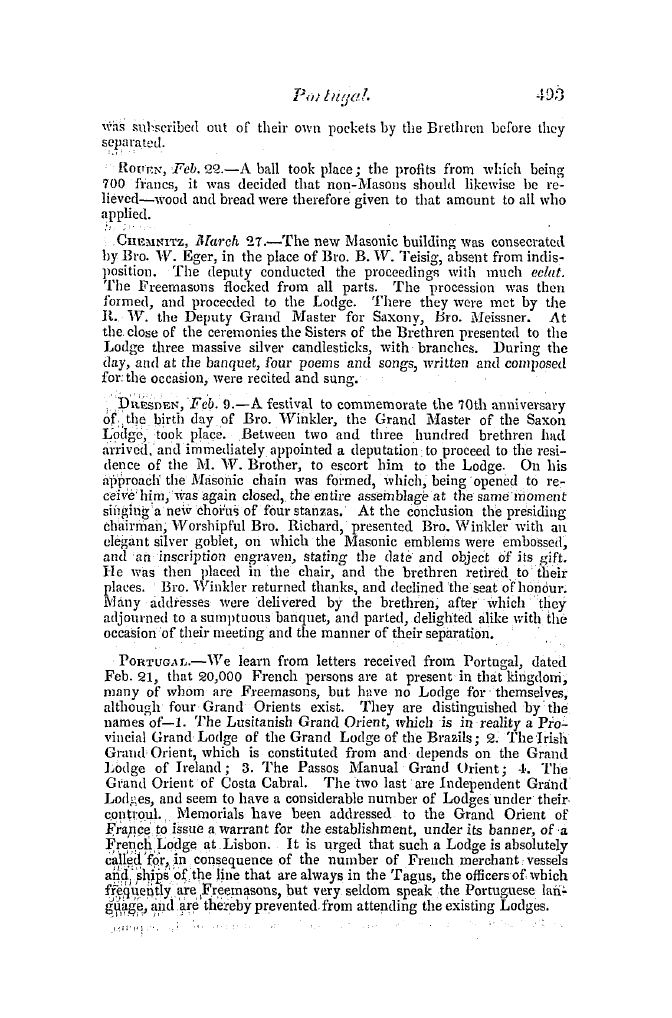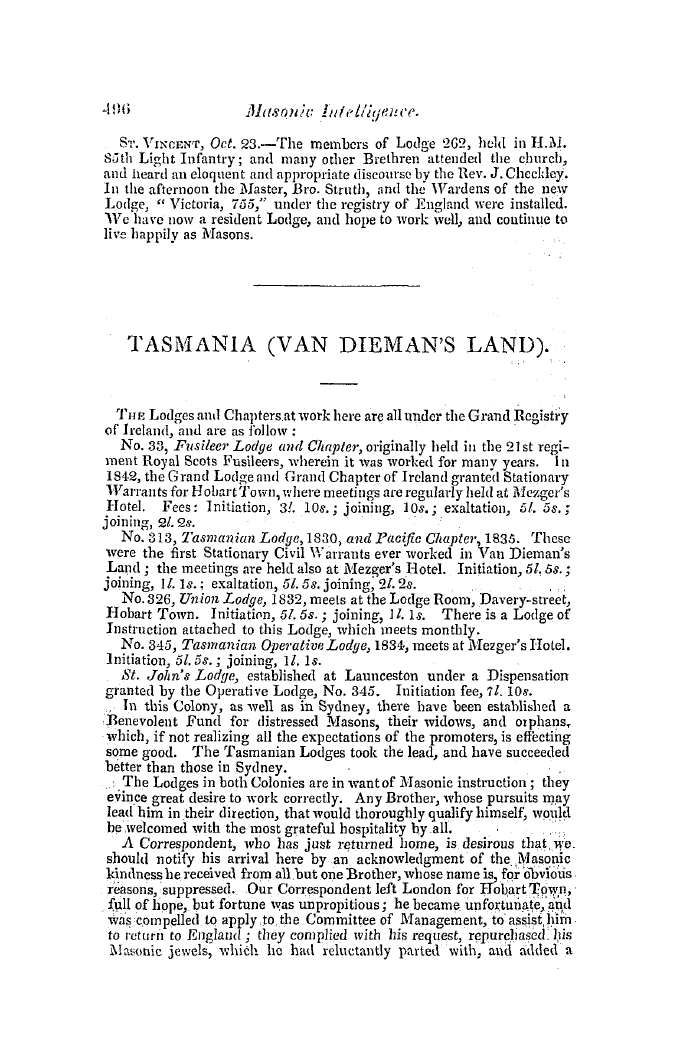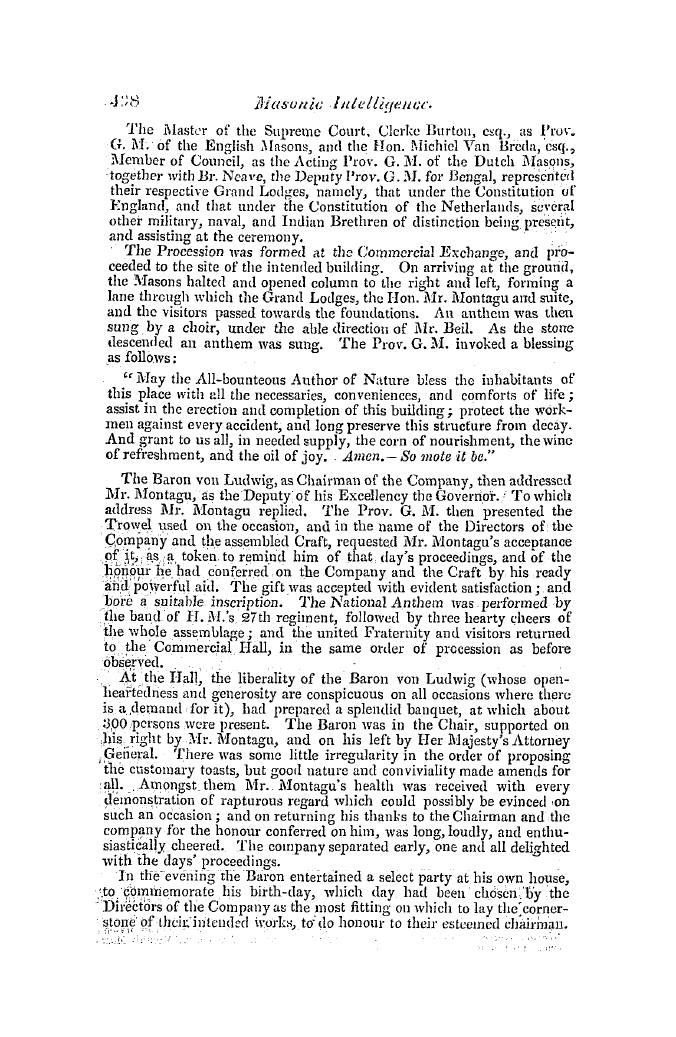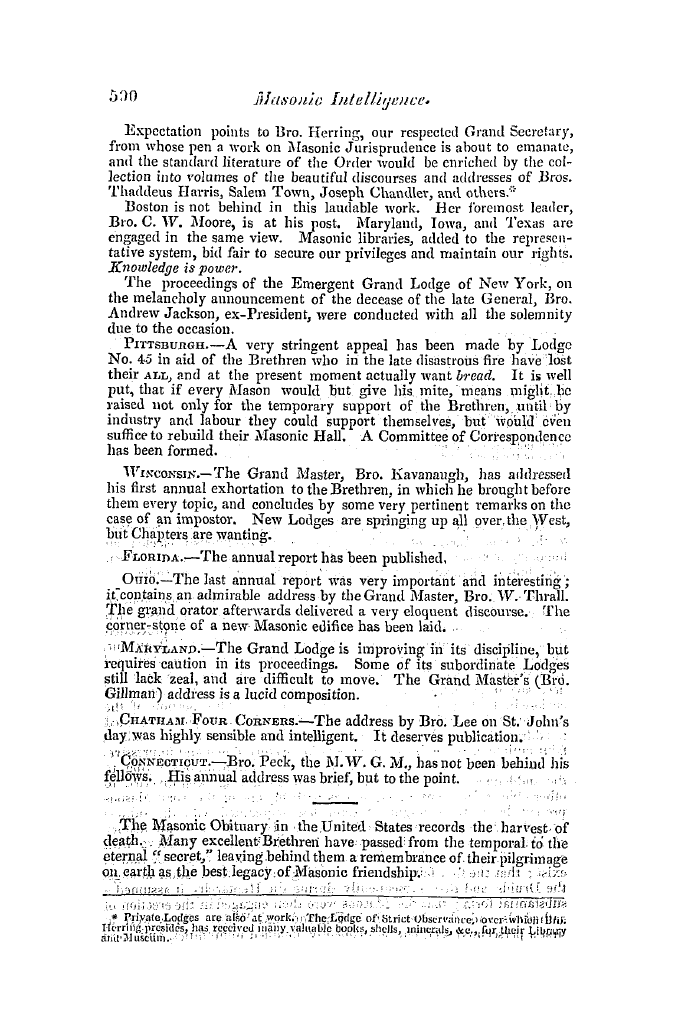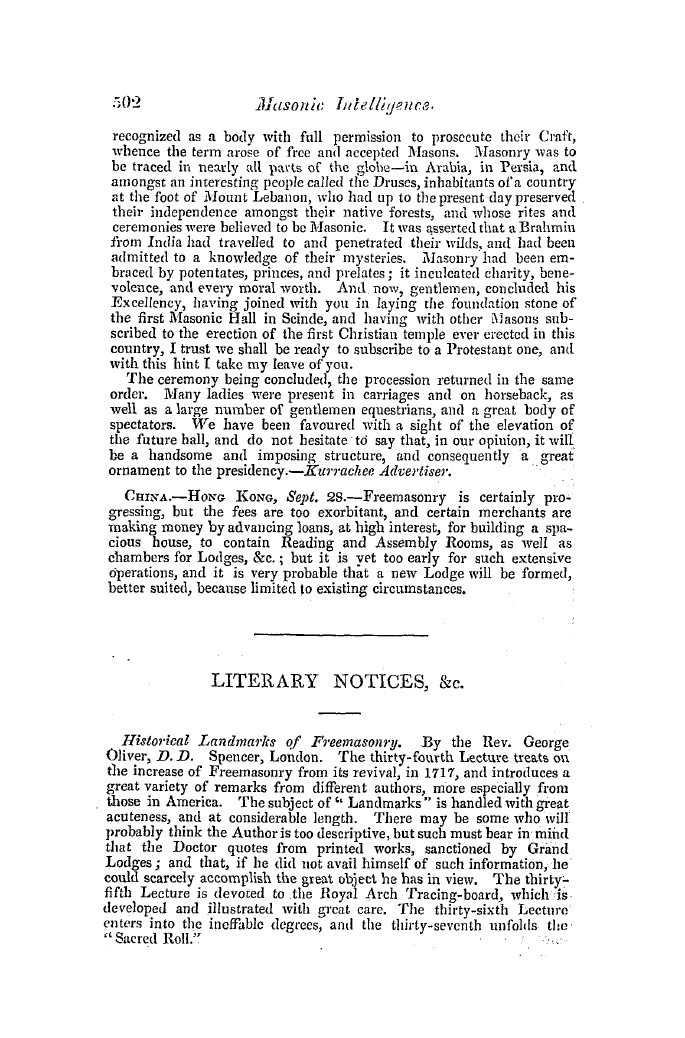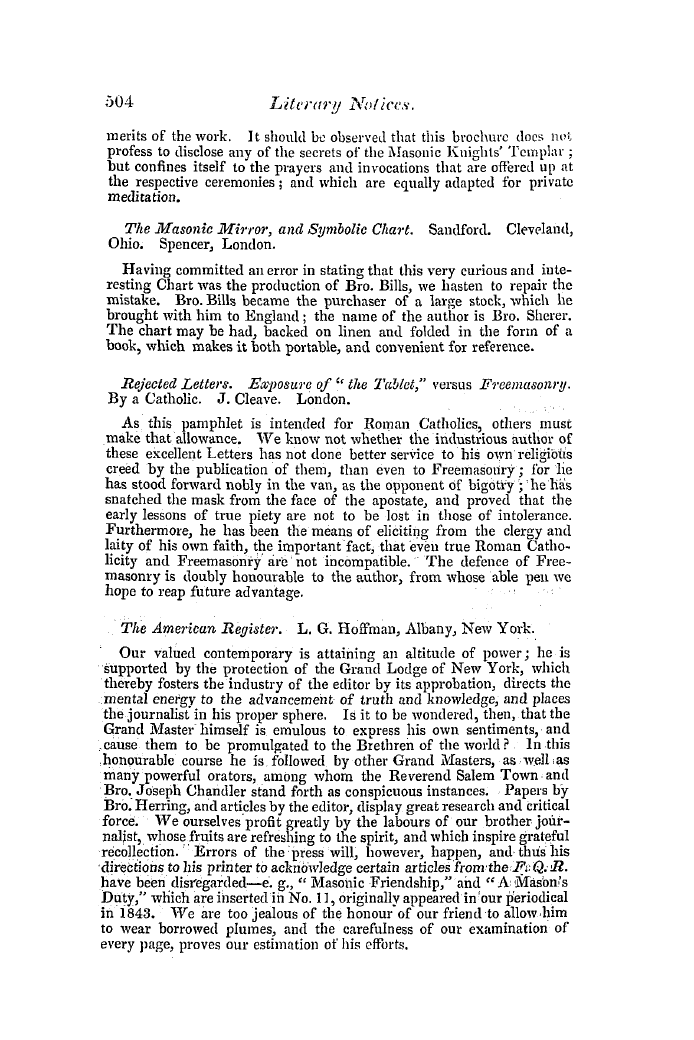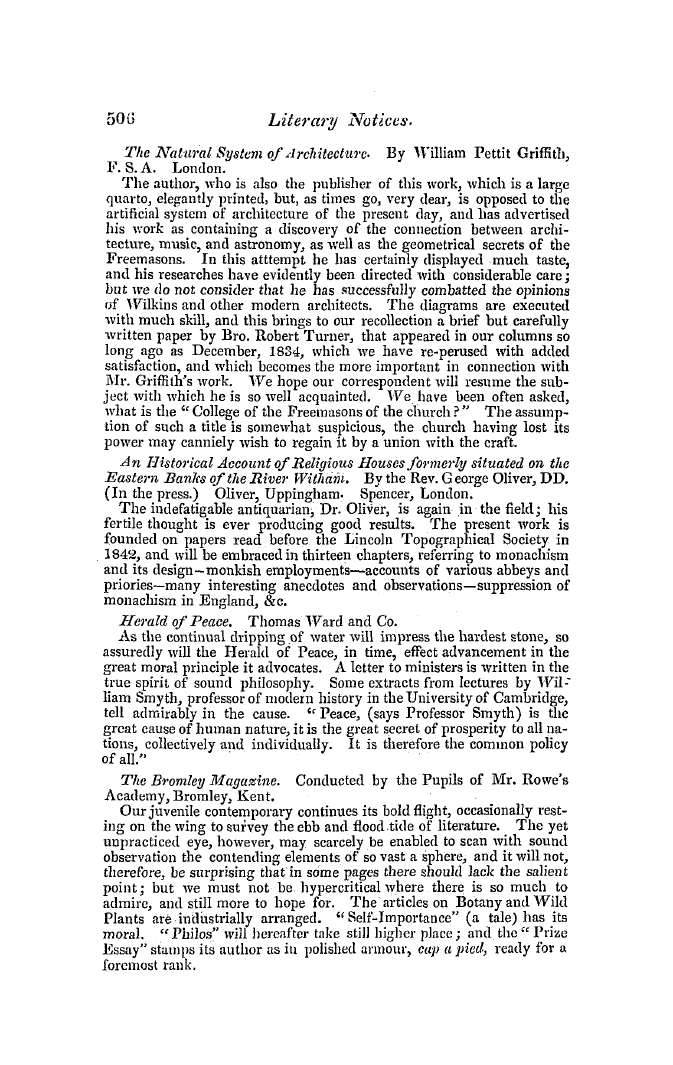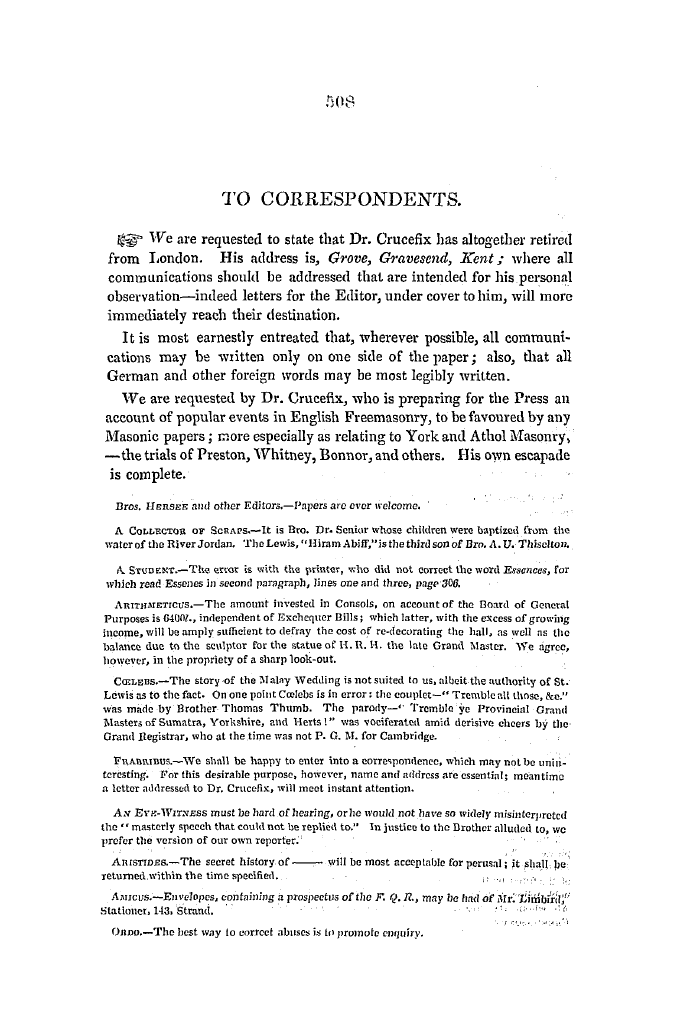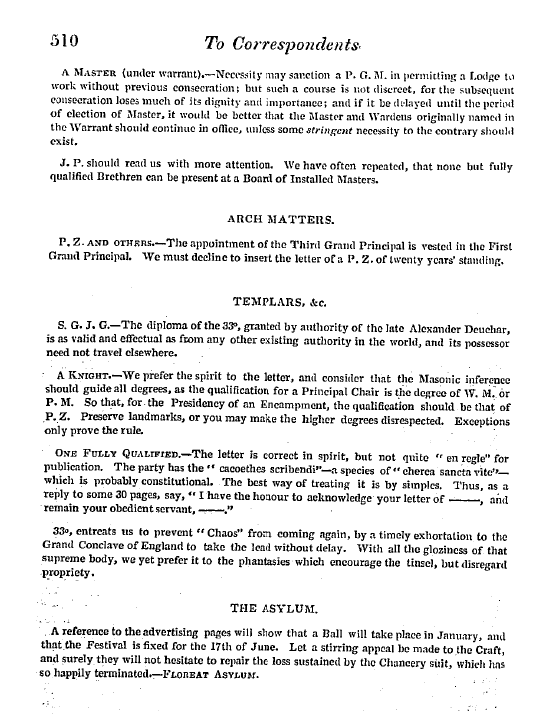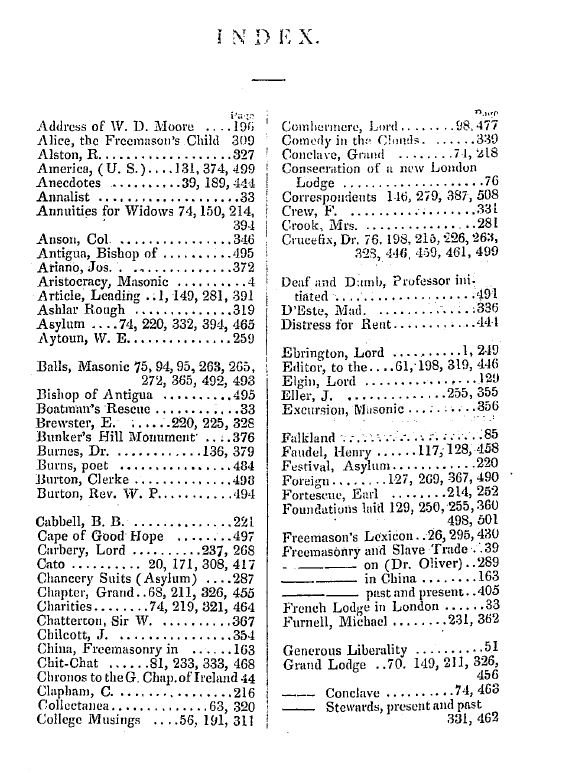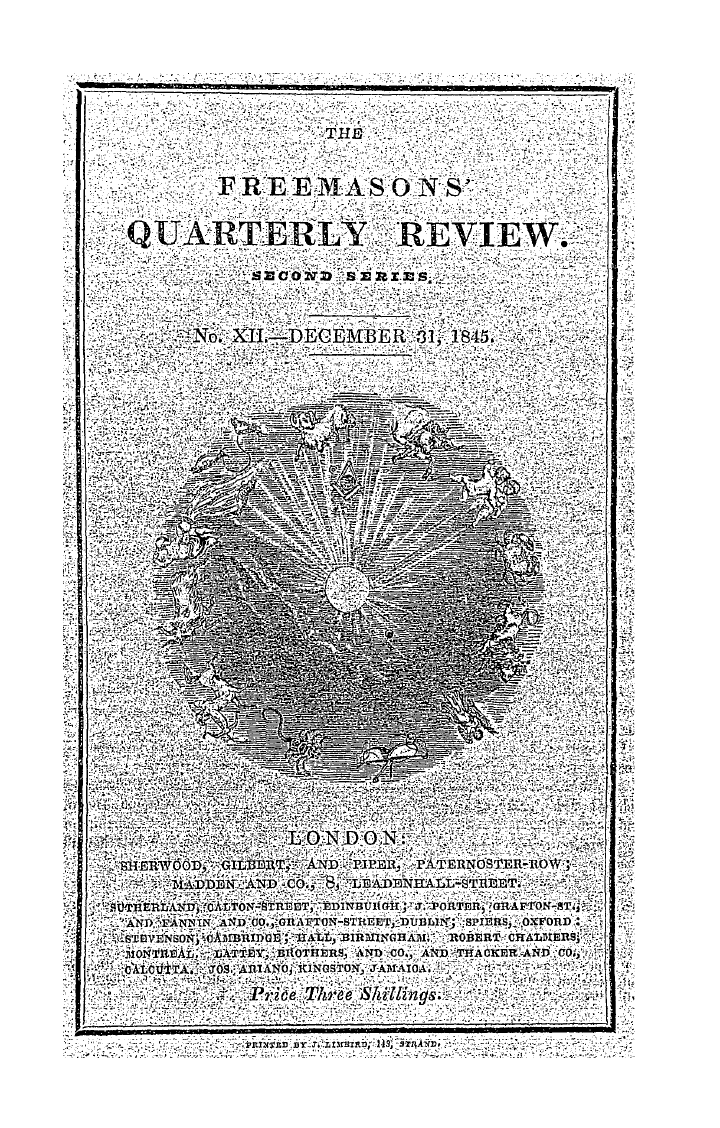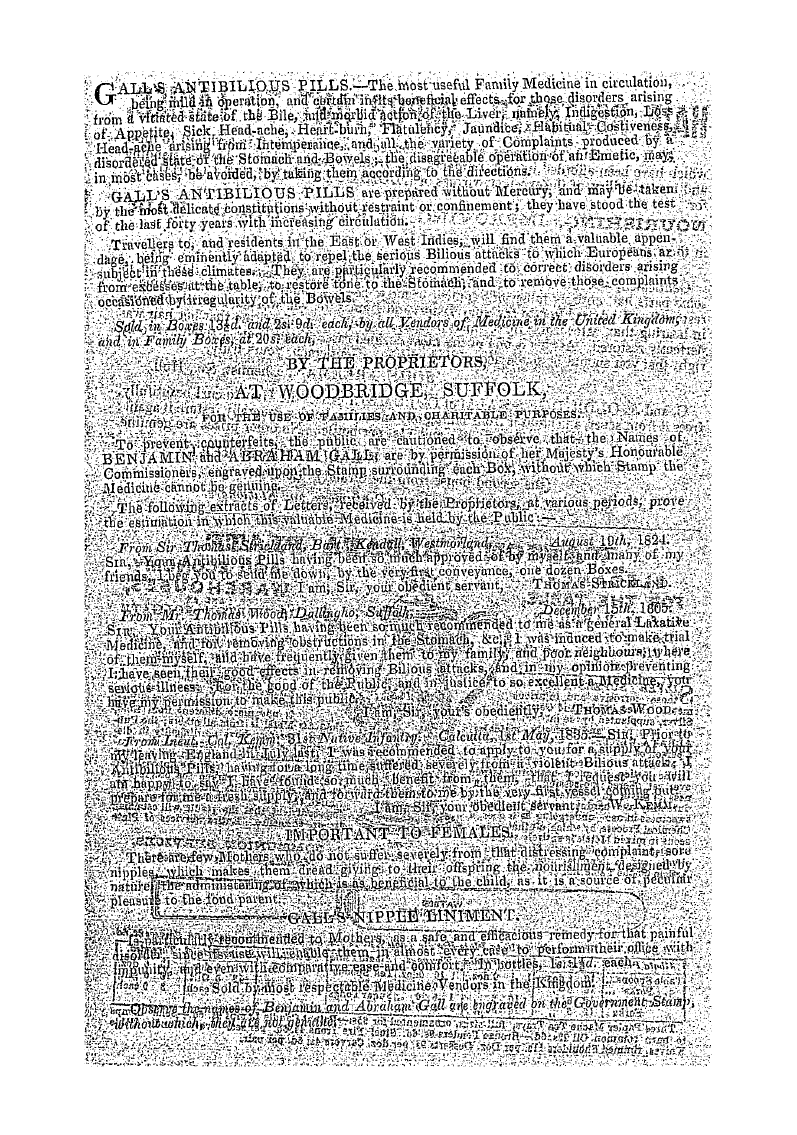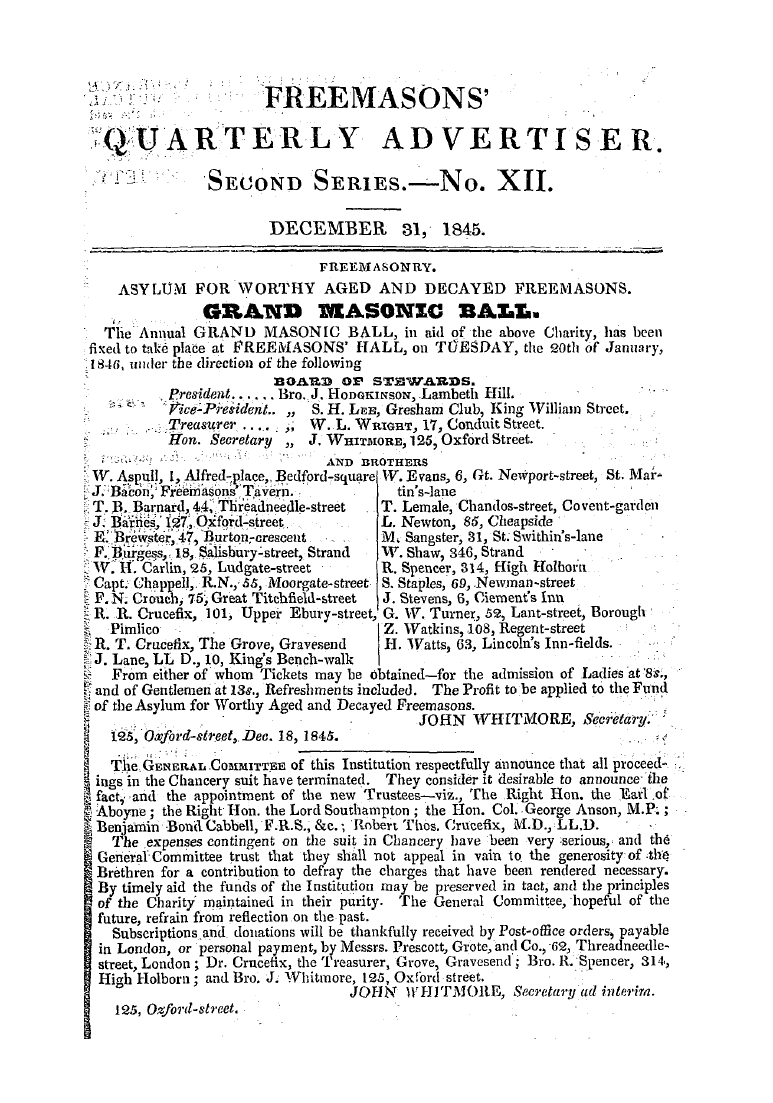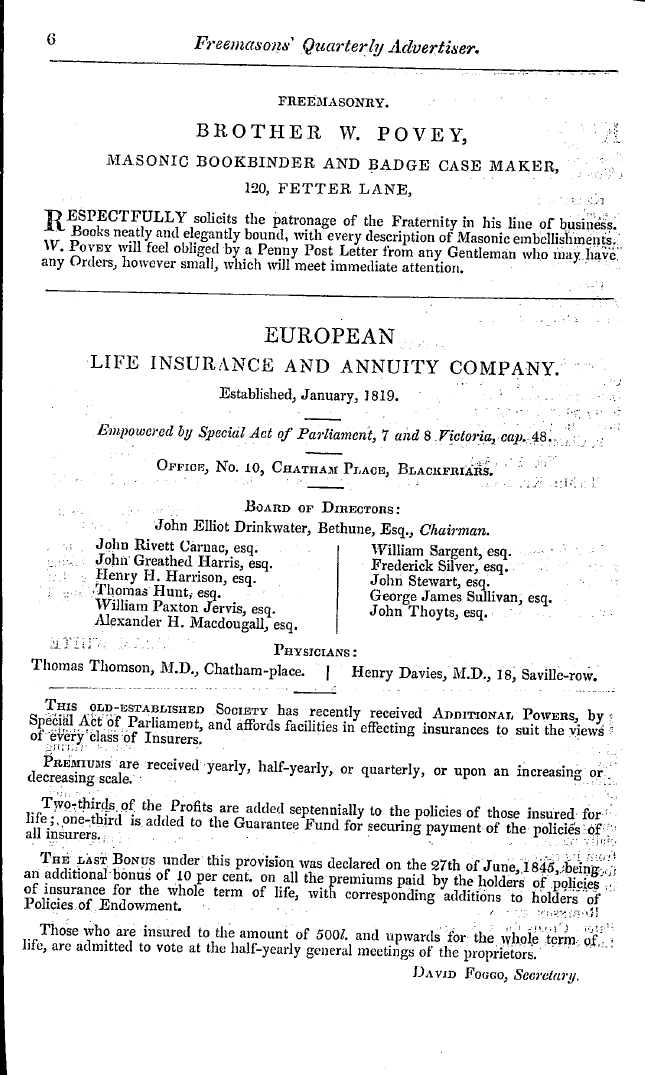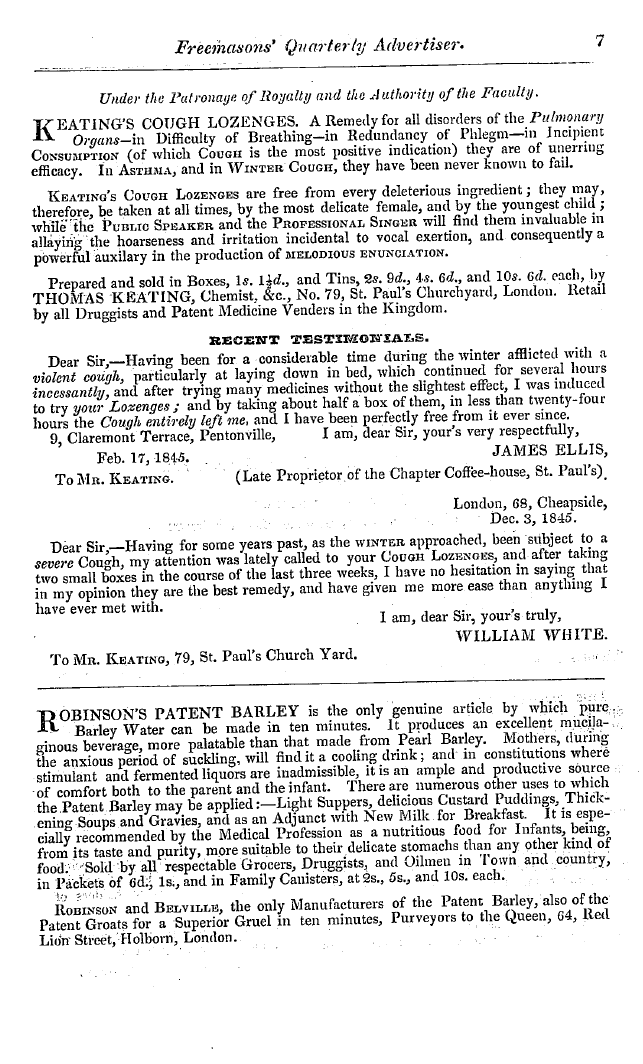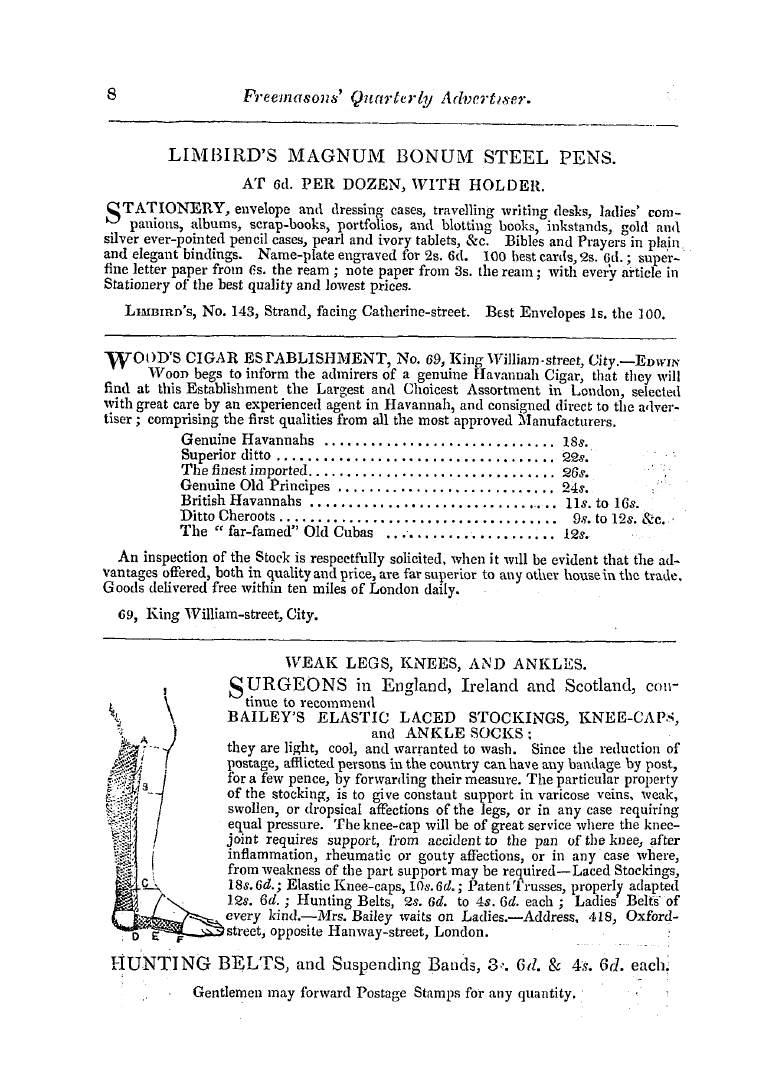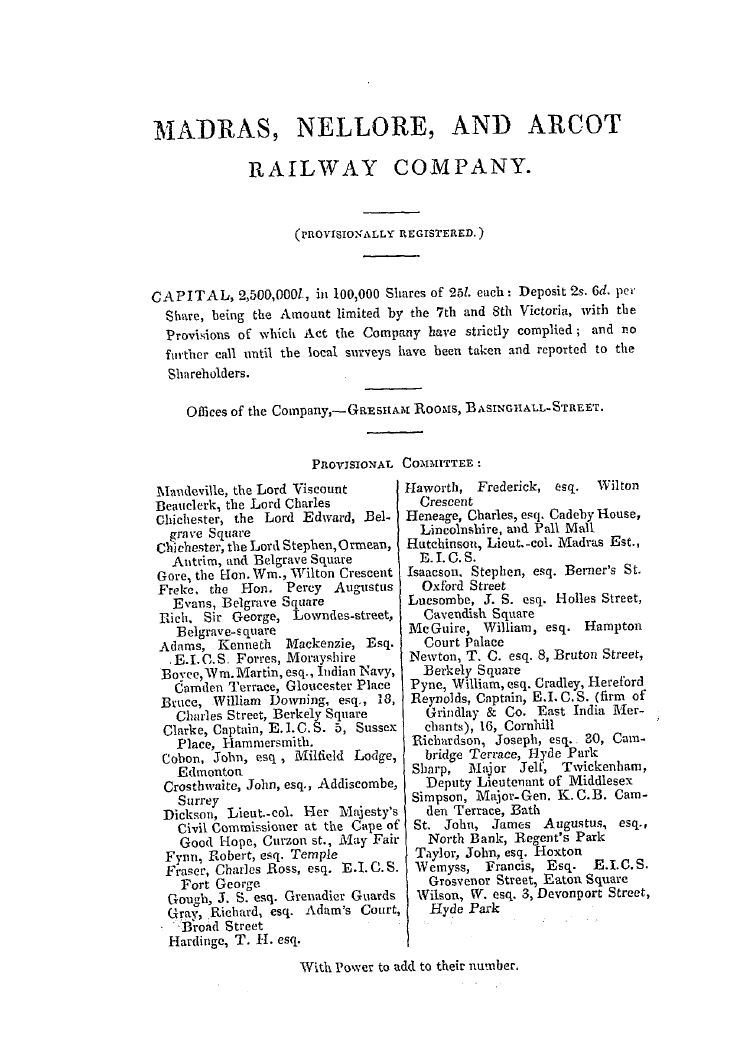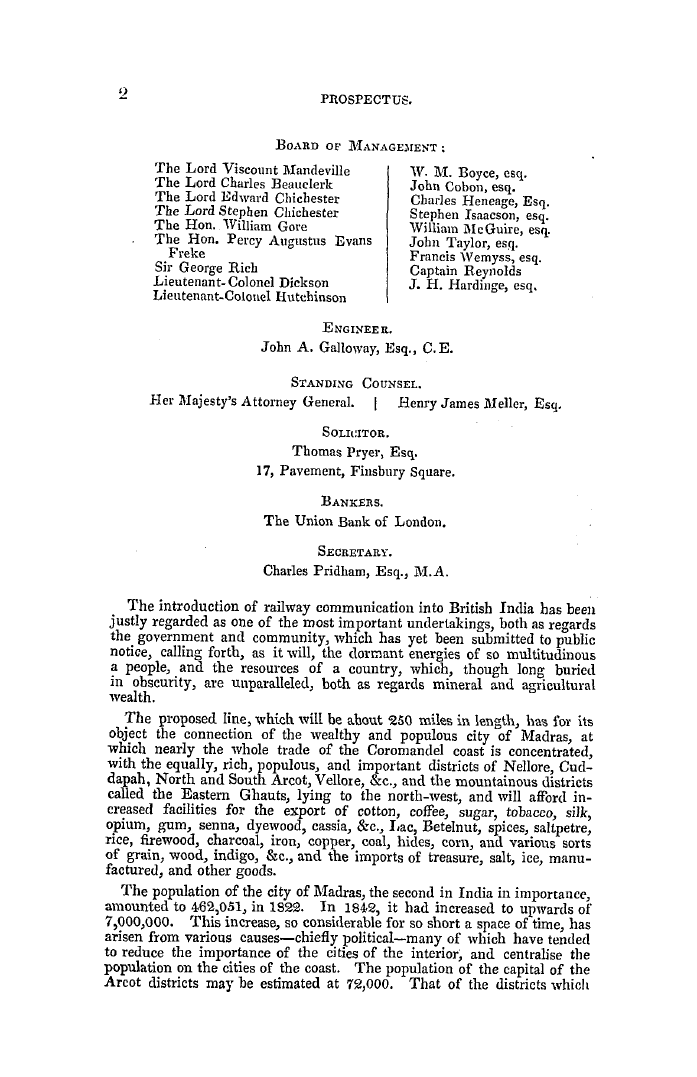-
Articles/Ads
Article FREEMASONRY, PAST AND PRESENT. ← Page 4 of 9 →
Note: This text has been automatically extracted via Optical Character Recognition (OCR) software.
Freemasonry, Past And Present.
of the Brethren , whenever assembled together in a just , perfect , and regular lodge , ( rendered so by the presence of the sacred volume ) , is to " expatiate on the mysteries of the craft , " " to make a daily advancement in Masonic knowledge , " by which they will be enabled to draw aside the veil of allegory and penetrate its mysteries . It is much to be regretted that the hours devoted to Masonry should not be more generall lied to its legitimate purposethat of " expatiating on the
y app , mys teries of the craft , " instead of assuming the character of a Bacchanalian club , which is too generally the case *; ancl the consequence is , that Masons , having but little opportunity of becoming acquainted with the " mysteries of the Craft , " mistake the allegory for the fact . Masonry is comprised under three heads ; viz . historical , symbolical , and mystical , and the majority of the Brethren are but little acquainted with any but the historical part ; and so closely is Masonry connected with Christianity ,
that the allegory under whieh it is veiled is entirely Jewish , ancl contained in every part of the Old Testament ; but the great mystery to which it refers is undoubtedly the mysterious scheme of human redemption , the veil of which is " rent in twain , " and the true Masonry brought to light by the New Testament ; and it may with justice be said of the generality of Masons of the present age , that " the light shineth in the darkness , but the darkness comprehendeth it not . " Had our ancient landmarks been preserved unimpaired by innovation , such probably would not have been the case . But it is time to refer to those innovations ; by
comparing the system of the present day with that of the last century , which I was first prompted to do by reading a remarkable passage in the speech of bur distinguished Brother , Dr . Oliver , upon the occasion of the testimonial being presented to him at Lincoln . The passage alluded to runs thus : " In 1813 or 1814 , a numerous and flourishing Lodge with which I was in the habit of occasional communication , appointed a Committee to revise the Lectures , for the purpose of making them palatable to all
the Brethren . Amongst the Members of the Lodge were several Jewish Masons , and they possessed sufficient influence to direct the Committee to withdraw from the Lectures every reference to Christianity . The attempt was rash , because , if it had succeeded , the ancient landmarks of the order would not only have been removed , but actually destroyed . , ' . The Committee entered on the work with great zeal and perseverance ; but as they proceededunforeseen obstacles impeded their . .
, progress They complained , that on a minute analyzation of the Lectures , they r ' found them so full of types and references to Christianity , that they could not strike them out without reducing the noble system to a mere skeleton , unpossessed of either wisdom , strength , or beauty . " Now I should be glad to know by what authority any individual Lodge may assume the privilege of removing the ancient landmarks of our Order . We are bound , by the most sacred ties , " to preserve our ancient
landmarks sacred and inviolate , and never to suffer an infringement of our rites , or a deviation from established usage and custoh _ . "t Such authority is neither vested in any private lodge , nor in the Grand Lodge ; J for every Master is called upon , at his installation , to . " admit ,
Note: This text has been automatically extracted via Optical Character Recognition (OCR) software.
Freemasonry, Past And Present.
of the Brethren , whenever assembled together in a just , perfect , and regular lodge , ( rendered so by the presence of the sacred volume ) , is to " expatiate on the mysteries of the craft , " " to make a daily advancement in Masonic knowledge , " by which they will be enabled to draw aside the veil of allegory and penetrate its mysteries . It is much to be regretted that the hours devoted to Masonry should not be more generall lied to its legitimate purposethat of " expatiating on the
y app , mys teries of the craft , " instead of assuming the character of a Bacchanalian club , which is too generally the case *; ancl the consequence is , that Masons , having but little opportunity of becoming acquainted with the " mysteries of the Craft , " mistake the allegory for the fact . Masonry is comprised under three heads ; viz . historical , symbolical , and mystical , and the majority of the Brethren are but little acquainted with any but the historical part ; and so closely is Masonry connected with Christianity ,
that the allegory under whieh it is veiled is entirely Jewish , ancl contained in every part of the Old Testament ; but the great mystery to which it refers is undoubtedly the mysterious scheme of human redemption , the veil of which is " rent in twain , " and the true Masonry brought to light by the New Testament ; and it may with justice be said of the generality of Masons of the present age , that " the light shineth in the darkness , but the darkness comprehendeth it not . " Had our ancient landmarks been preserved unimpaired by innovation , such probably would not have been the case . But it is time to refer to those innovations ; by
comparing the system of the present day with that of the last century , which I was first prompted to do by reading a remarkable passage in the speech of bur distinguished Brother , Dr . Oliver , upon the occasion of the testimonial being presented to him at Lincoln . The passage alluded to runs thus : " In 1813 or 1814 , a numerous and flourishing Lodge with which I was in the habit of occasional communication , appointed a Committee to revise the Lectures , for the purpose of making them palatable to all
the Brethren . Amongst the Members of the Lodge were several Jewish Masons , and they possessed sufficient influence to direct the Committee to withdraw from the Lectures every reference to Christianity . The attempt was rash , because , if it had succeeded , the ancient landmarks of the order would not only have been removed , but actually destroyed . , ' . The Committee entered on the work with great zeal and perseverance ; but as they proceededunforeseen obstacles impeded their . .
, progress They complained , that on a minute analyzation of the Lectures , they r ' found them so full of types and references to Christianity , that they could not strike them out without reducing the noble system to a mere skeleton , unpossessed of either wisdom , strength , or beauty . " Now I should be glad to know by what authority any individual Lodge may assume the privilege of removing the ancient landmarks of our Order . We are bound , by the most sacred ties , " to preserve our ancient
landmarks sacred and inviolate , and never to suffer an infringement of our rites , or a deviation from established usage and custoh _ . "t Such authority is neither vested in any private lodge , nor in the Grand Lodge ; J for every Master is called upon , at his installation , to . " admit ,


